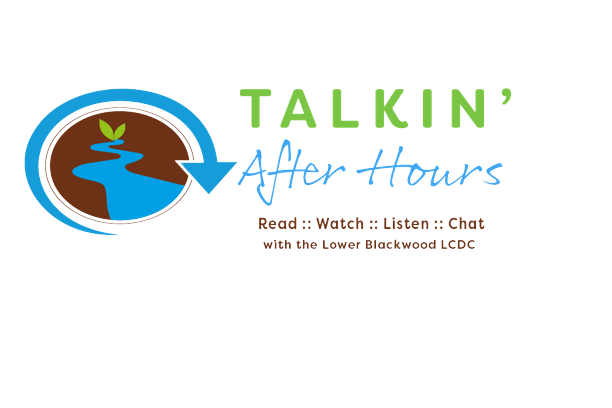Case Study: Oranje Tractor Wine
Murray Gomm on Regenerative Farming and Soil Health
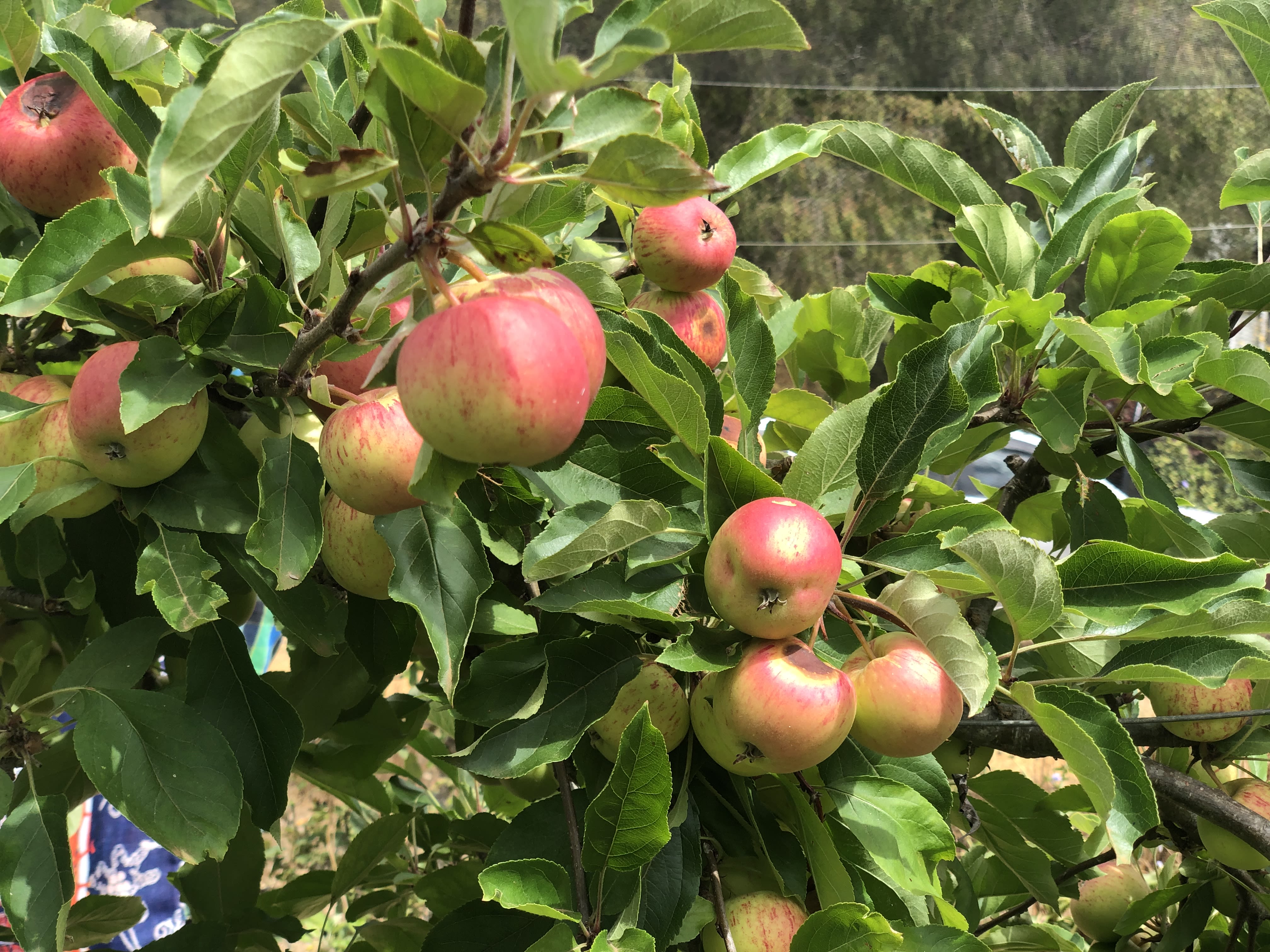
In February 2023, Dr. Christine Jones toured Perth and the south west of WA hosting workshops and masterclasses to share her insights and knowledge on building soil health.
The workshops and masterclasses were supported by the Department of Primary Industries & Regional Development in a collaboration between the Lower Blackwood LCDC, Torbay Catchment Group, Perth NRM/RegenWA, Earthwhile Australia, Wilson Inlet Catchment, The Serpentine Jarrahdale Food and Farm Alliance (SJFFA), Oyster Harbour Catchment Group Inc, South Coast NRM, Galloway Springs and the Department of Primary Industries and Development Perth Hills and Swan Valley Project.
Roadshow Case Studies
As part of the roadshow activities, a series of case studies have been developed to share the journeys of local farmers following regenerative agriculture principles. These farmers have candidly shared their experiences - highs and lows - hoping that they can help other farmers along the way.
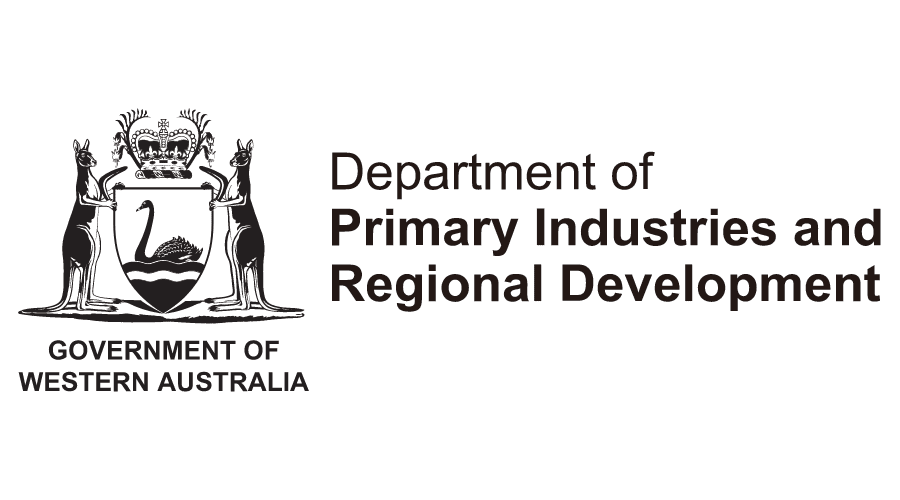
Background
Back in 1996 Murray and his wife Pam inherited 20 acres of his parents' beef cattle farm. It was a bare paddock - grazed down and stark. But Murray and Pam already knew they could make much more of their land. Armed with a two-day course in permaculture (neither had a horticulture background) and a lot of enthusiasm, they started planting. Over the following years they studied viticulture and winemaking and went on a Churchill Study Tour to investigate organic grape growing in the USA and Europe.
The farm is less than 10km from the south west coastline in Marbelup, a suburb almost 20km from the centre of Albany in Western Australia. The latitude - 34°58'40.97"S - puts the vineyard smack bang in between the 30th and 50th parallels which is where the majority of the world's premium wine production takes place. Similar maritime-climate wine regions include Bordeaux, Champagne, Alsace, most of Germany and Tasmania and these all enjoy a long, cool growing season that is ideal for growing grapes for wines of distinction with impressive structure, natural acidity and minerality.
First came the vines and the start of the orchard. Little did they know that 20 years later they would have a flourishing organic farm with rich soils, succulent fruits, a popular Cellar Door showcasing vermouth made from botanicals grown on site.
But the journey wasn't an easy one.
The farm was cleared in the 1950’s and had received annual doses of synthetic fertiliser, kikuyu dominated and there was some compaction.
When they first took on the land they both worked - Pam full time, Murray part time. Murray built a solar passive house then started to grow the farm.
By 1998/99 the vines were planted, followed by the Cellar Door in 2005 in a shed that offered tastings and sales. Now a range of bookable, immersive tasting experiences are offered.
The farm is now a commercial enterprise with the couple dedicated to it full time. Wine is the main commodity, with some fruit also sold.
"We live in a peasant's paradise. But yes, we survive off the farm." - Murray Gomm
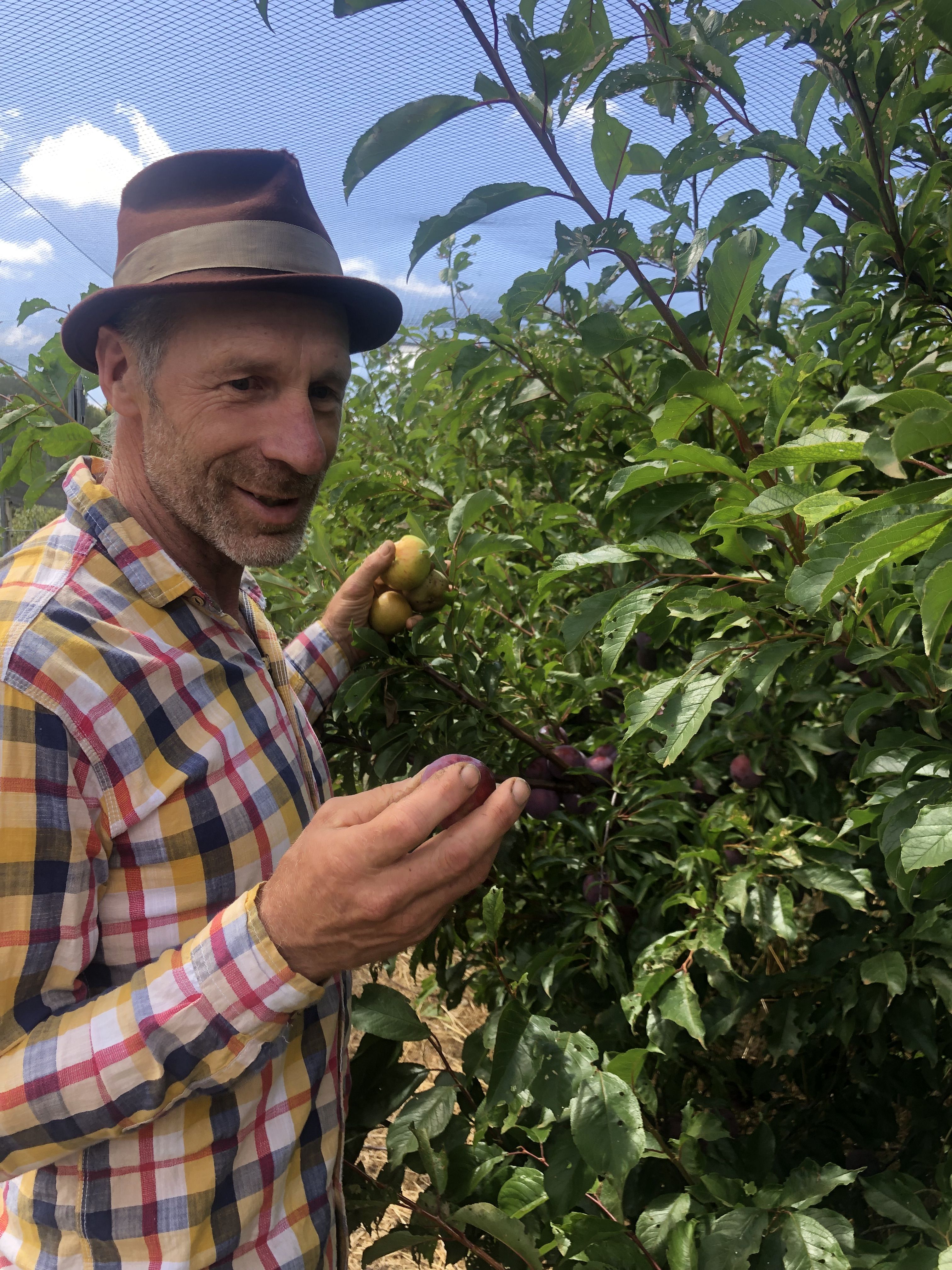
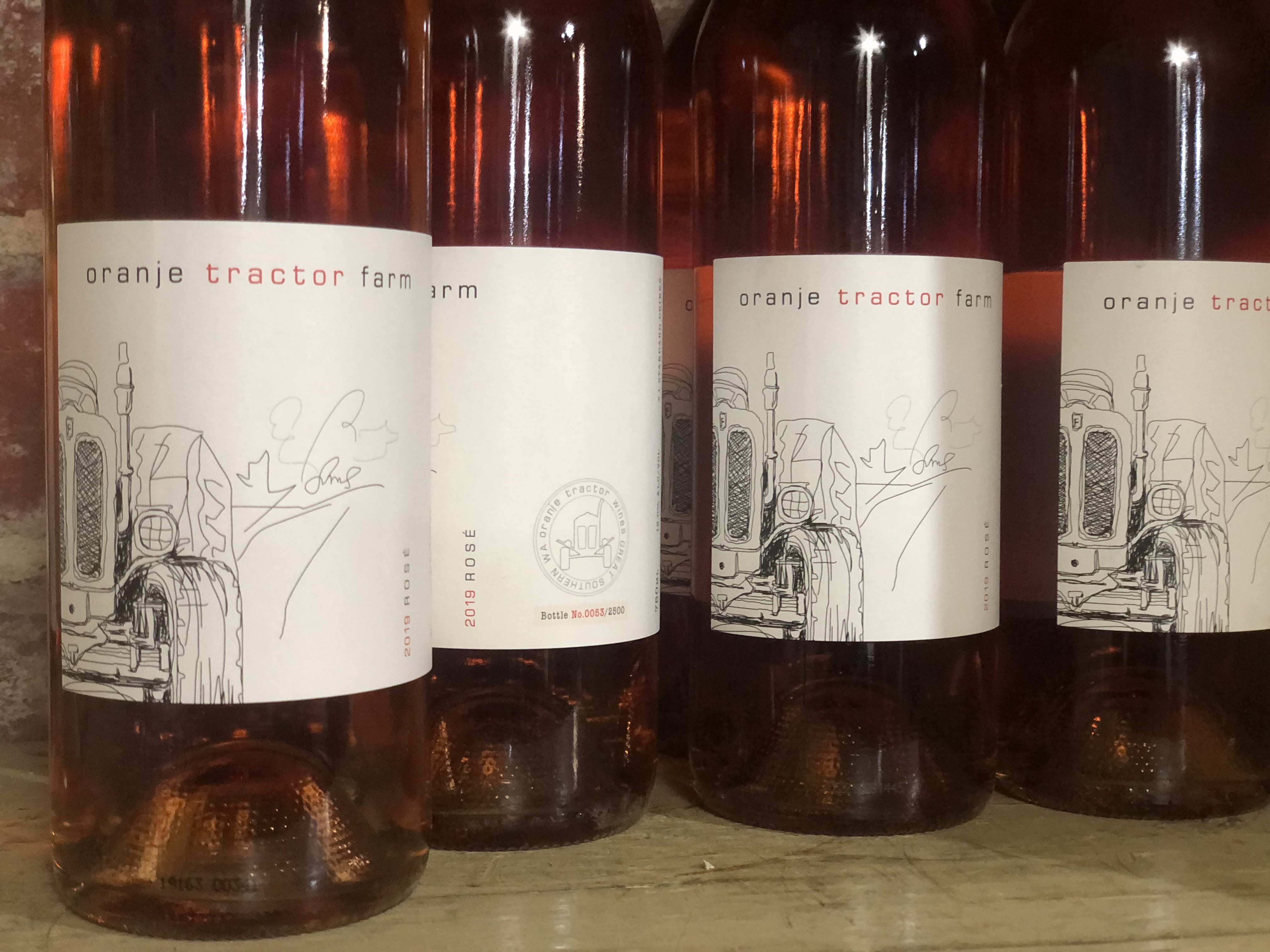
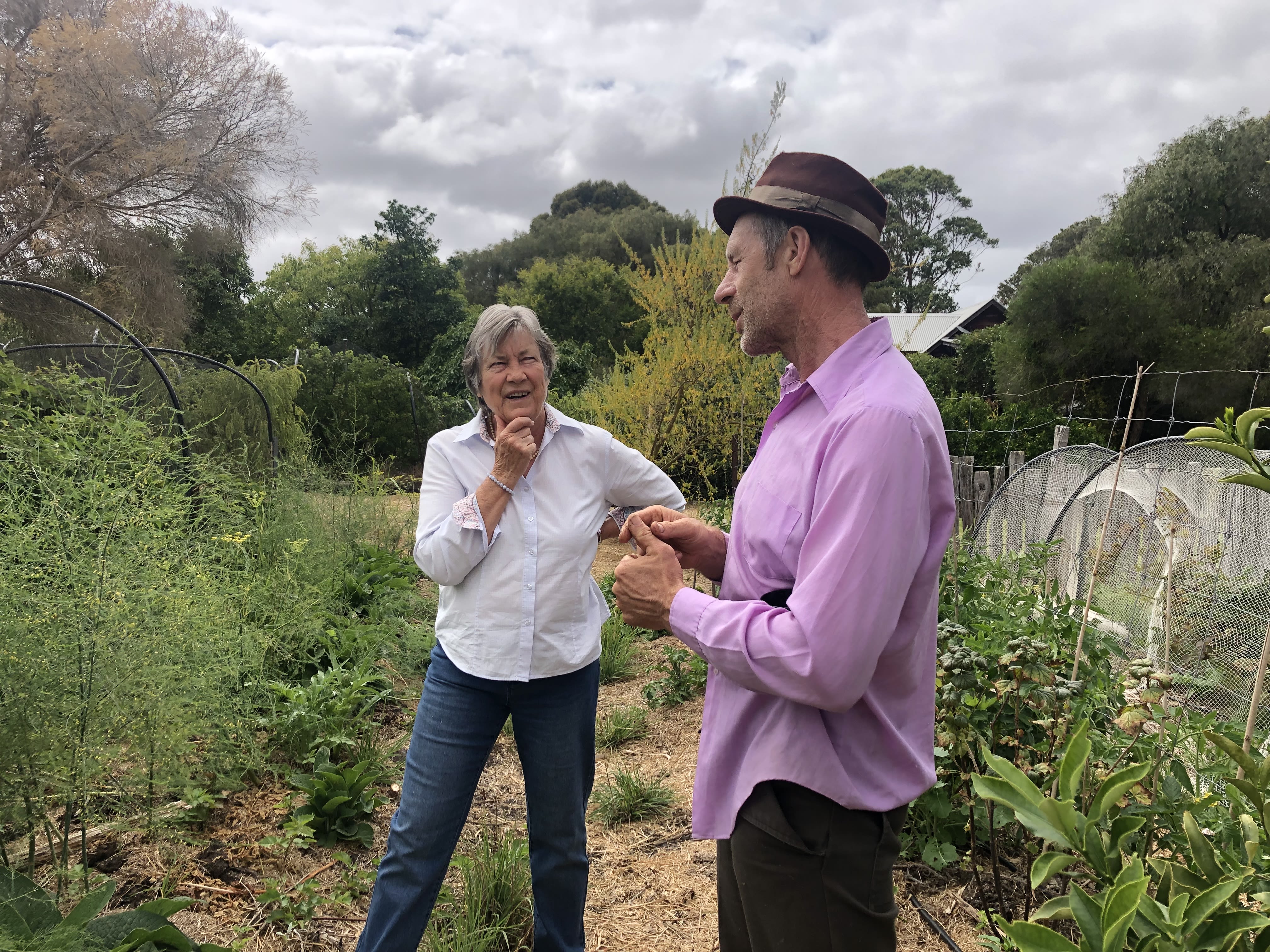



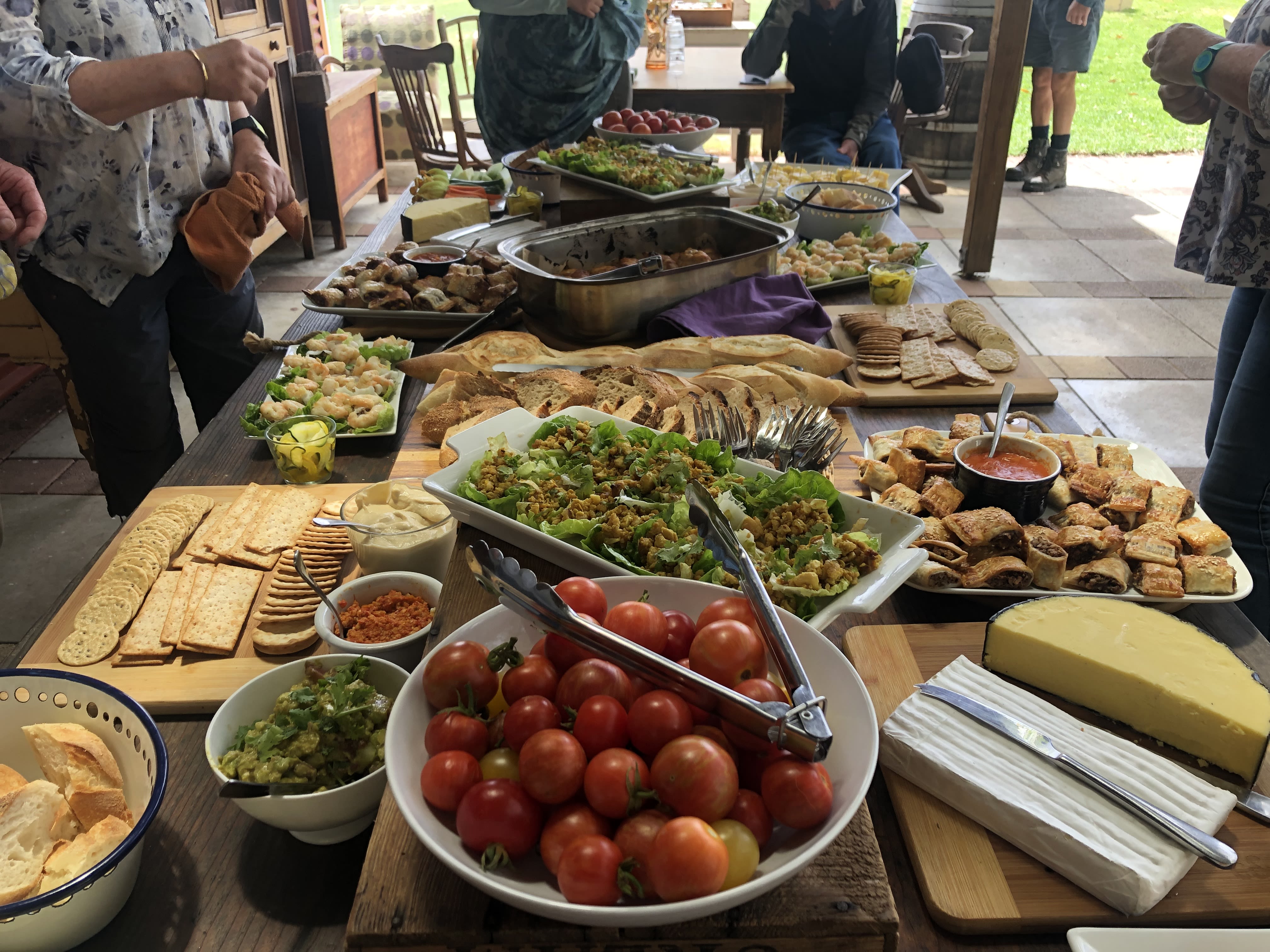
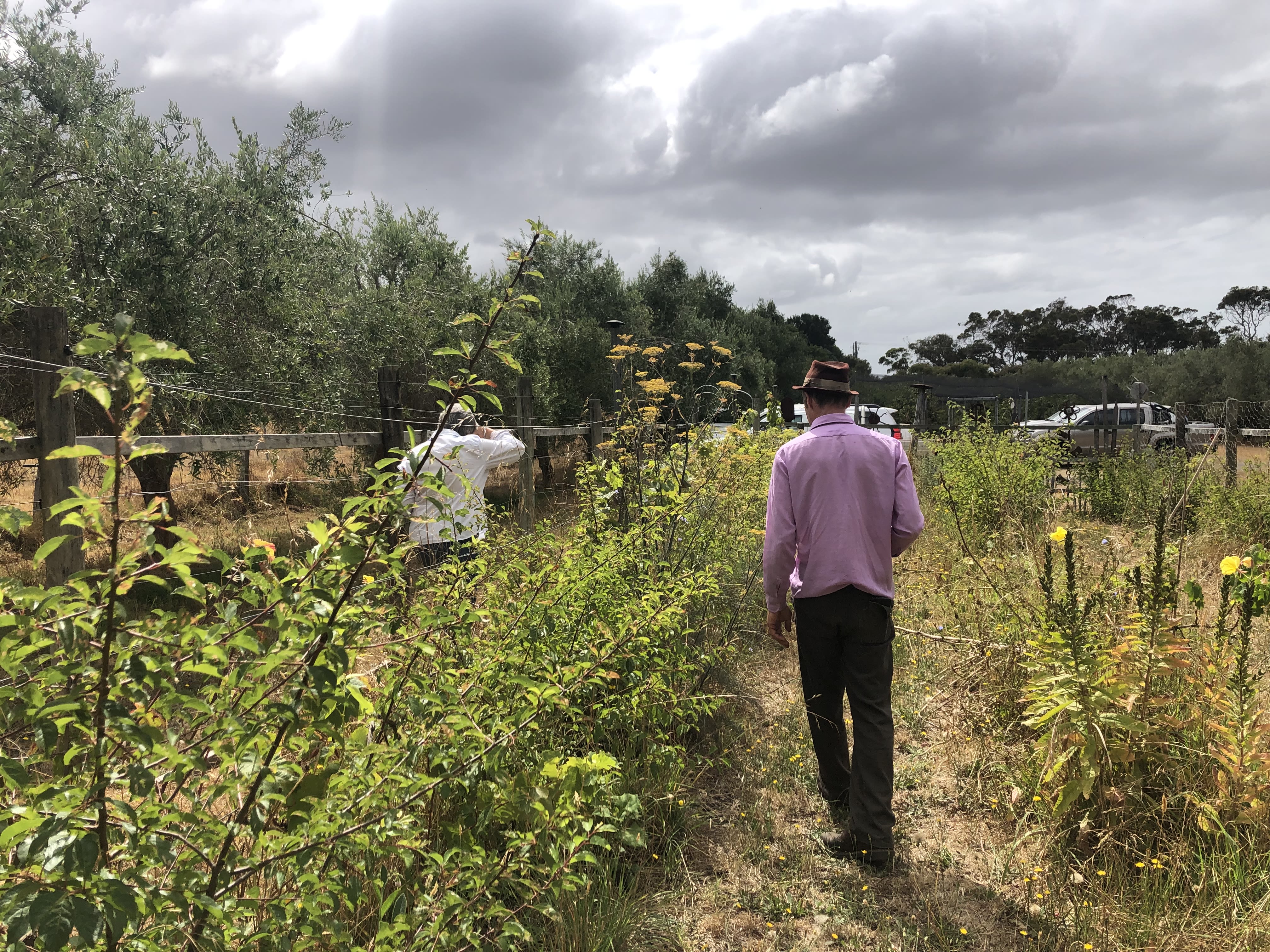
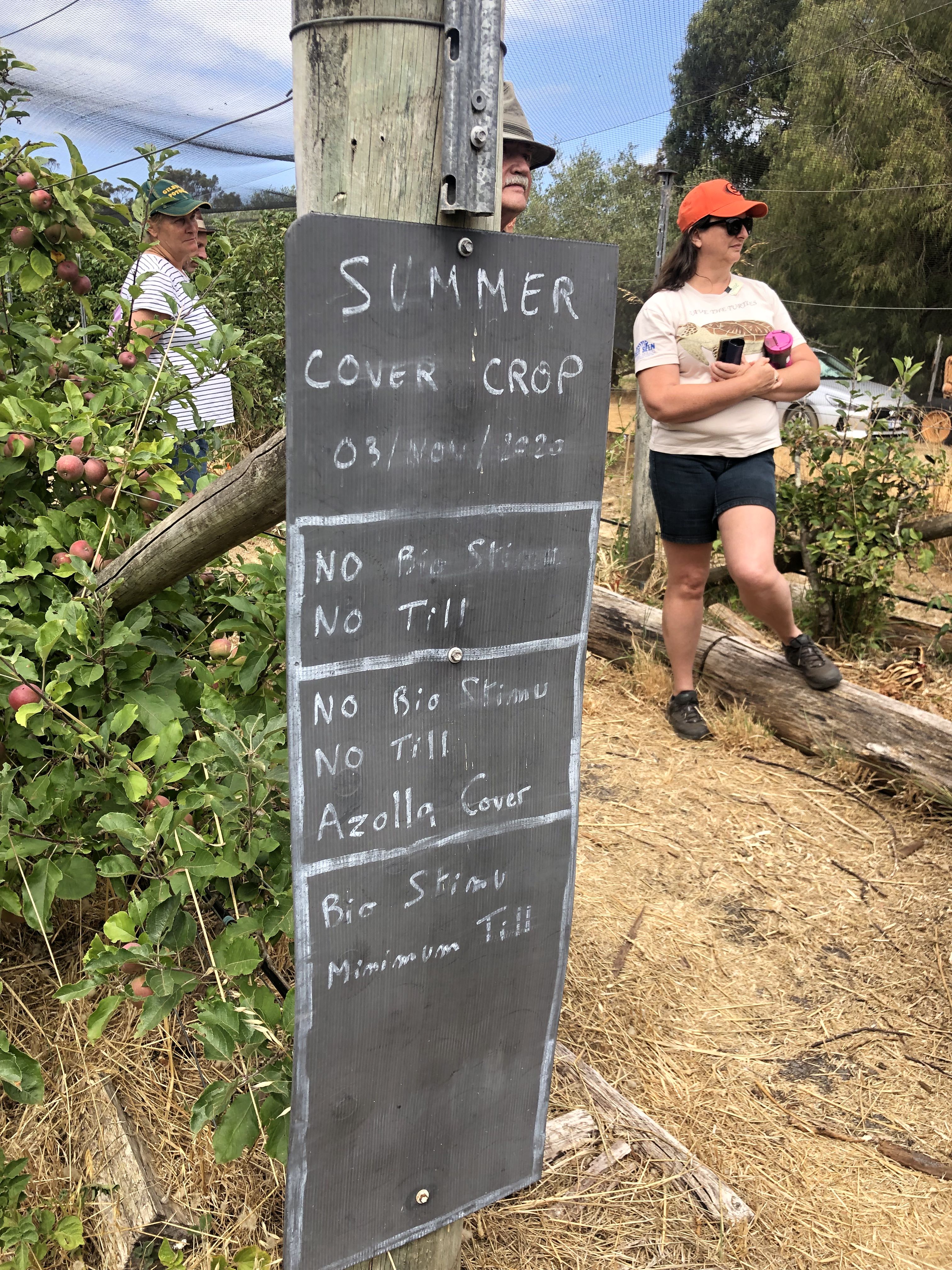
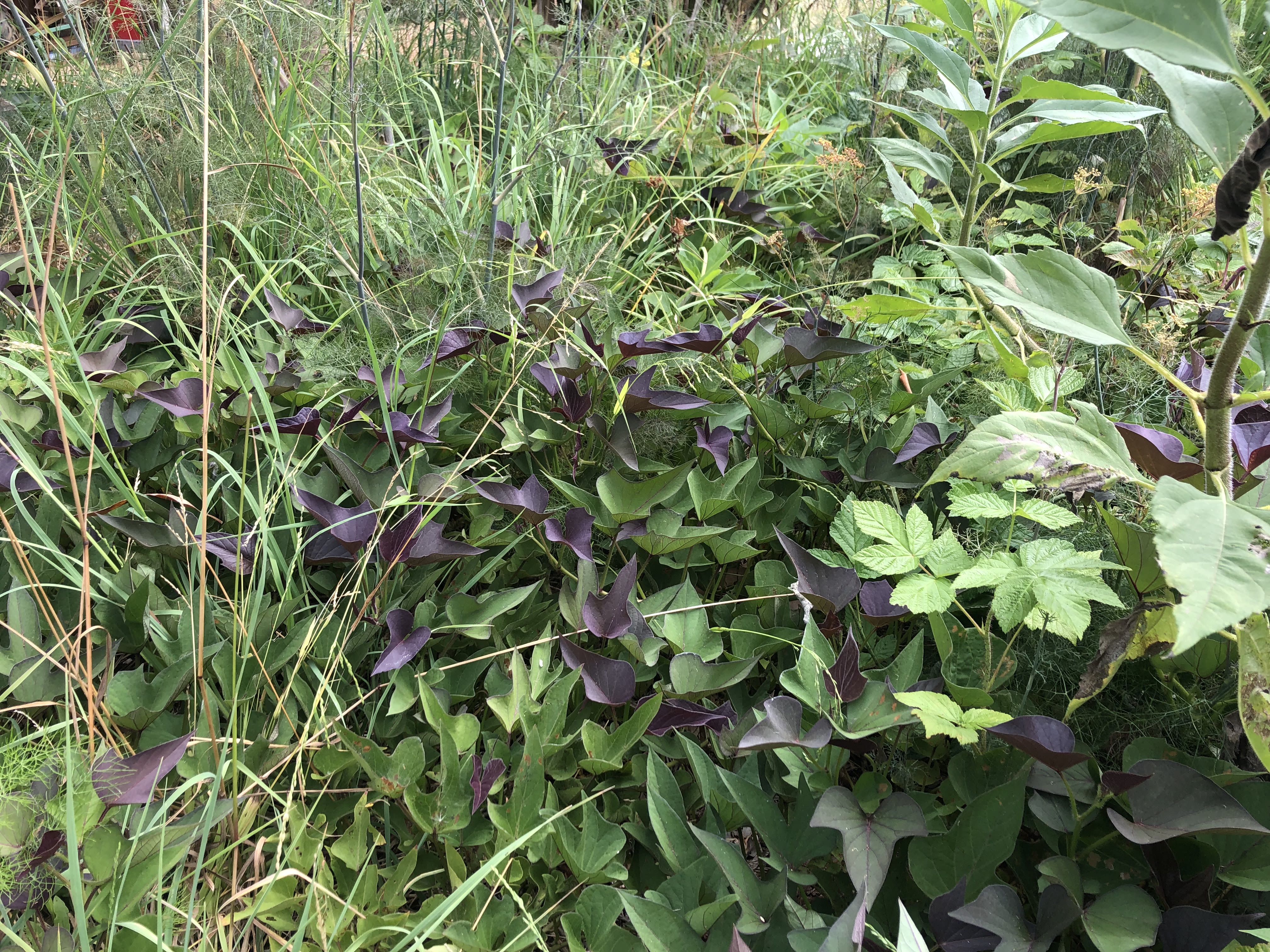
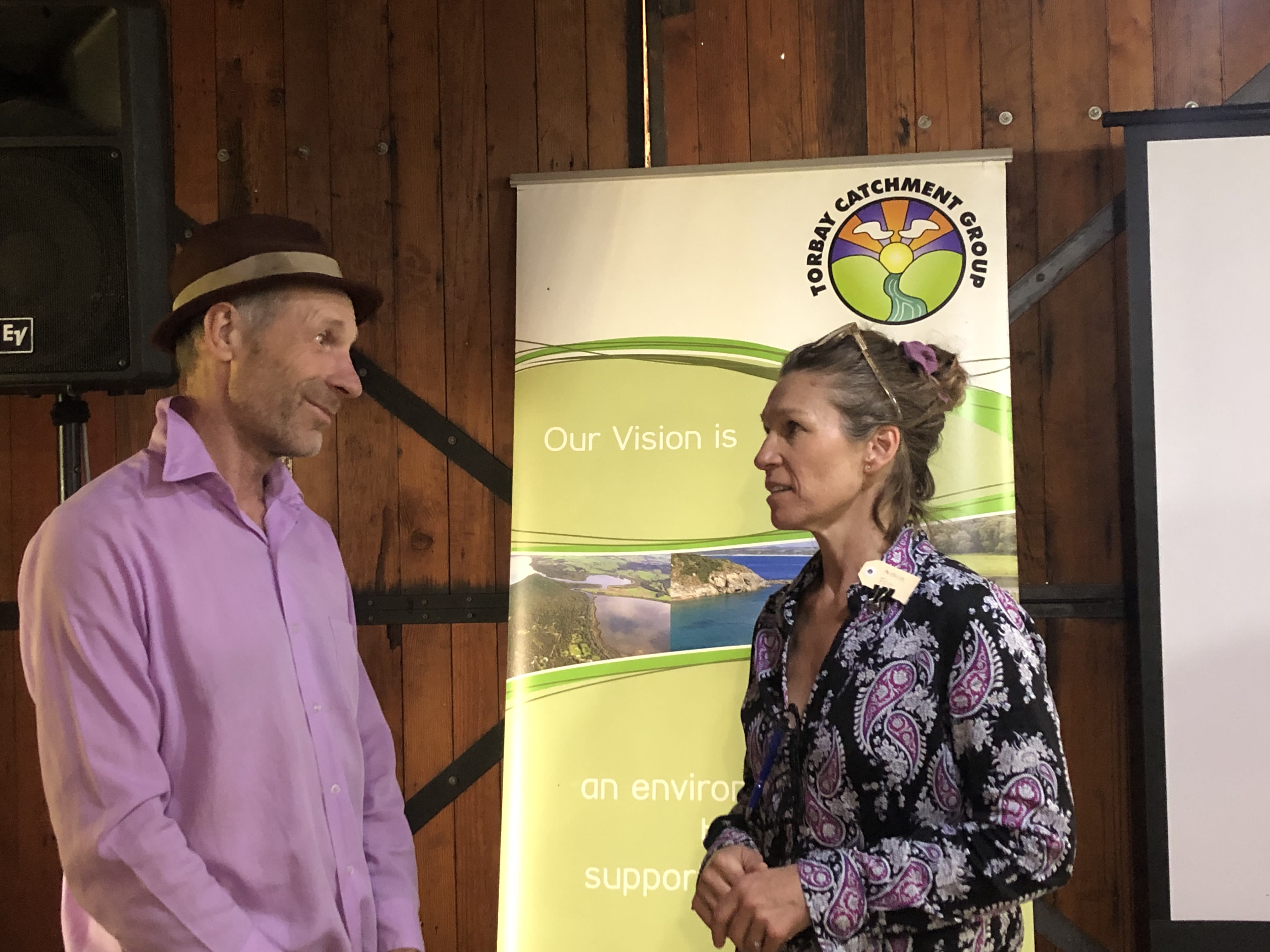
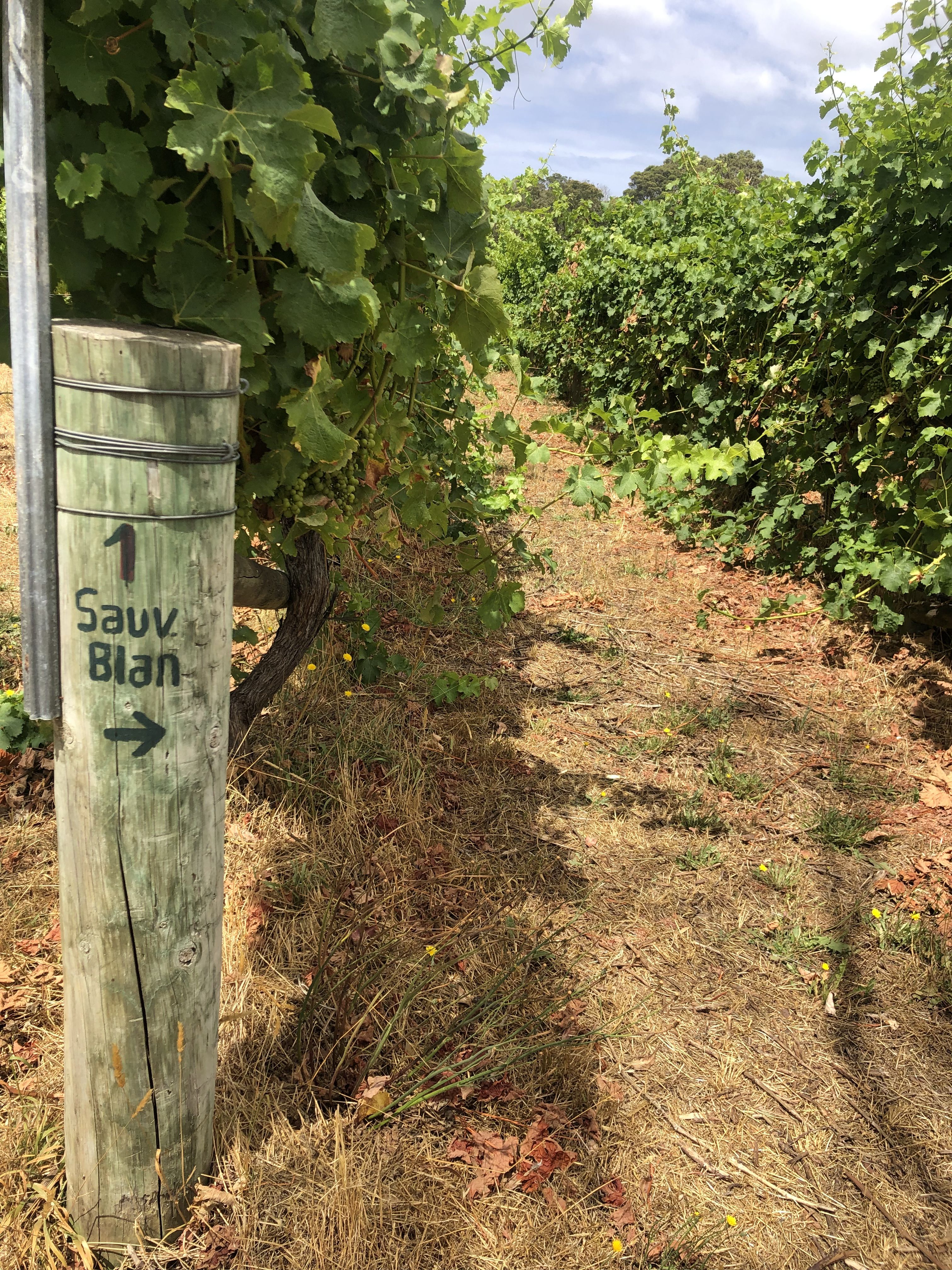












The Vineyard
FACT FILE: Oranje Tractor Wine
- 8 acres under vine
- Produce 10 tonnes/10,000 bottles
- Riesling, Sauvignon Blanc, Merlot, Pinot and Shiraz (the Shiraz ended up being too vigorous and was grafted over to Pinot)
Murray and Pam decided to grow what they preferred to eat - essentially chemical free, healthy food. They wanted to work with nature, not against it.
In the vineyard, this meant re-thinking a lot of the traditional, chemically intensive processes.
Canes and pruning:
Traditionally canes are pruned and removed (to also remove fungal spores as well as keeping them from being tangled in the nets). But this was a labour-intensive project, so Murray decided to leave the canes between every second row and run a slasher over them allowing the nutrients to be recycled back into the system. This also created an environment conducive to funghi, a key player in the soil food web.
Using livestock:
Due to the lack of machinery (despite the Oranje Tractor name, the farm didn't have a tractor) sheep were brought in to graze between the vines - another accidental step towards regenerative farming practice...
Over these early years Murray and Pam hadn't heard of Regenerative Agriculture. But their instinctive yearning for natural produce and practices was clearly leading them down that path. When Murray heard about a series of cover cropping workshops at the Lower Blackwood LCDC he knew he had to find out more.
Cover Cropping:
Three years ago Murray and Pam started with a Bell Seeds Regenerative Ag Mix (from Nutrien Ag Margaret River). ). It was coated with a bio stimulant blend of molasses, worm wee, kelp and fish emulsion The mix included three varieties of Rye Grass, two different clovers, Plantain, Chicory, Cocksfoot, Ryecorn, Peas and Oats - in total 12 species. This year a diverse cove crop seed mix was sourced closer to home from Goodies Farm which came inoculated with vermicast. This cover crop was grown and harvested together at Goodies farm which means the seeds have a more diverse microbiome that will increase the diversityof our soil food web.
Did it work?
Murray believes that the mix of deep-rooted grapevines, sheep grazing and fertilising the plants as well as the diversity of plants that are each good at extracting and recycling specific nutrients has created a diverse soil food and robust and resilient vines. No fertiliser has been applied since 2011 (except for one potassium foliar).
But it's all about timing...
Murray advises that a cool season cover crop is best sown as early as mid-April rather than waiting for late April/mid-May. Planting a warm season cover crop (to have living roots in the soil over summer) in mid-October is probably not worth the effort, as success depends on late spring and early summer rain. Instead, he believes it’s better to include chicory, plantain and evening primrose in the mid-April planting as these are deep rooted plants that can survive over summer. Make sure you have a diversity of plant species- ensure you have grasses, cereals, legumes, and herbs.
Foliar and Cover Crops as fertiliser:
Over the last few years, early in the growing season he noticed some red leaves on the pinot vines and sent some away for analysis. The results showed a potassium deficiency. Rather than follow the advice he received which was to apply a granular fertiliser he applied a potassium foliar.
He believes the diverse cover crop will help to make potassium more available to the vines as different plant species specialise in accumulating different nutrients and making them available to the ecosystem pool.
He is happy to report that soil organic matter has increased by 48% since 2003, currently sitting at 8.5%. Increasing soil organic matter is a cornerstone metric of organic and regenerative agriculture as it aids soil structure, water-holding capacity, nutrient mineralization, biological activity, and water and air infiltration rates.
Organic Certification:
The vineyard has been certified organic since 2005 and was a natural progression of the family's farming philosophy.
"We decided to grow this farm by working with nature rather than declaring war against it." - Murray Gomm
Carbon Accounting:
Murray was always interested in finding out what his carbon footprint was, so following a call out from Landcare Australia for farms interested in carbon accounting, Oranje Tractor finally had some data. Although they were already certified organic, he was aware of the risk of still being a 'carbon vandal'.
The vineyard was very low input; just small amounts of sulphur and potassium sulphur and potassium bicarbonate are used for powdery mildew control. Other considerations were the fuel for the ATV and methane from the sheep so that side was relatively easy to tally. . Quantifying the area and diversity of revegetation on the property and average circumference of the vine trunks and cordons provided the data on how much carbon the farm was packing away.
The result was that the 20-acre property absorbs six times Co2 and Co2 equivalents than the vineyard emits - putting the farm firmly on the right side of the ledger.
Murray is keen to point out that this didn't include any formal validation or accreditation.
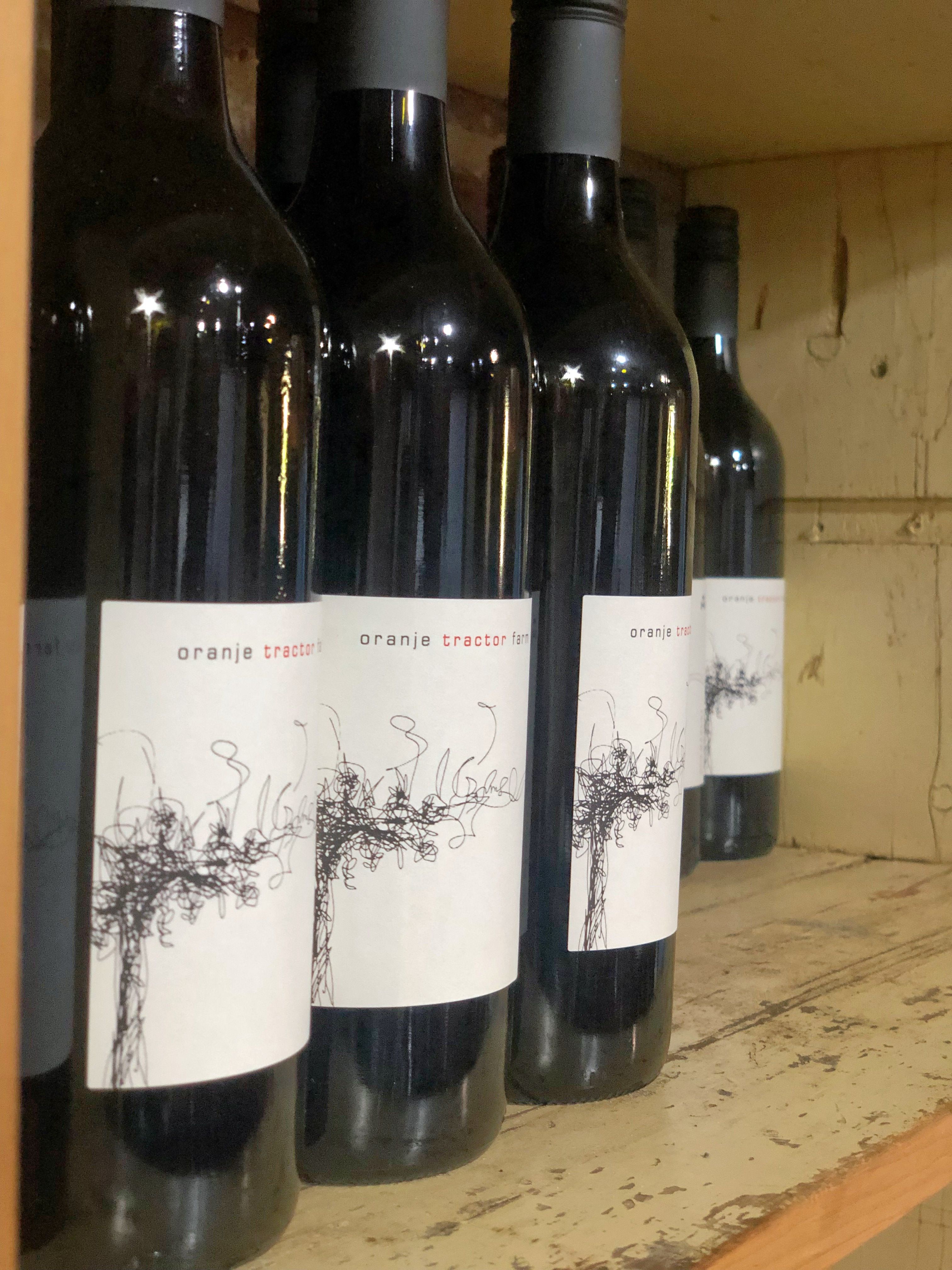
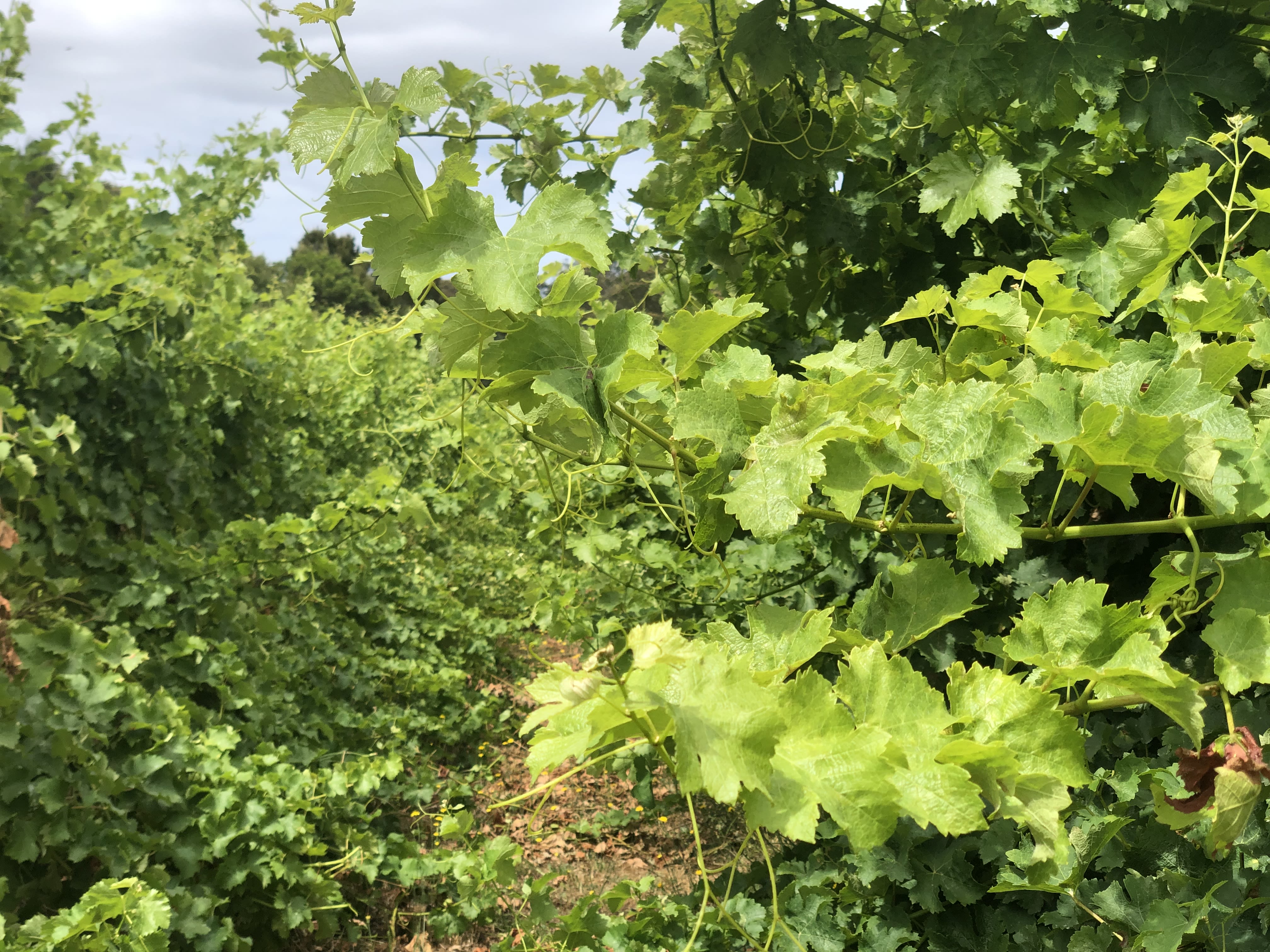
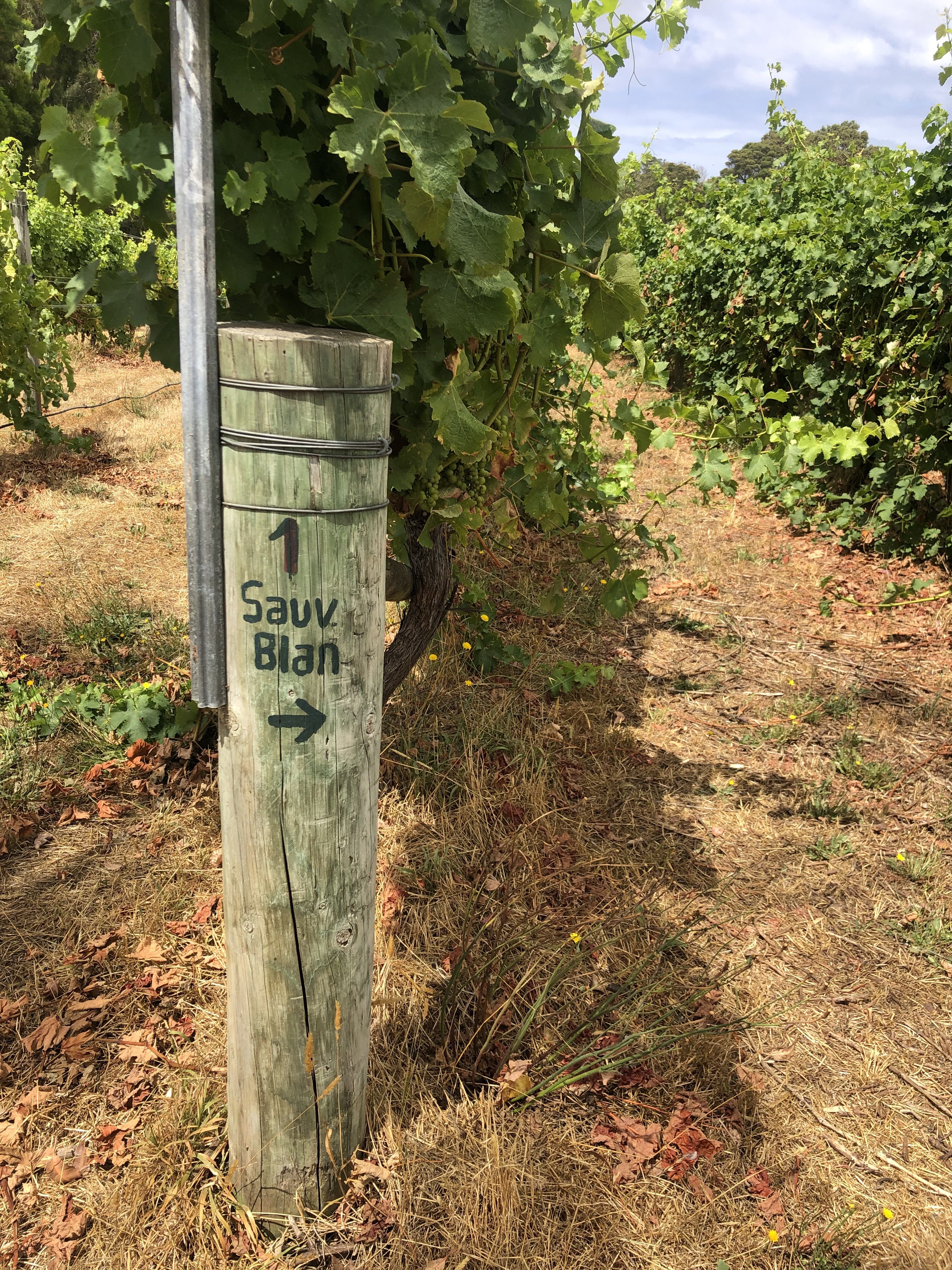

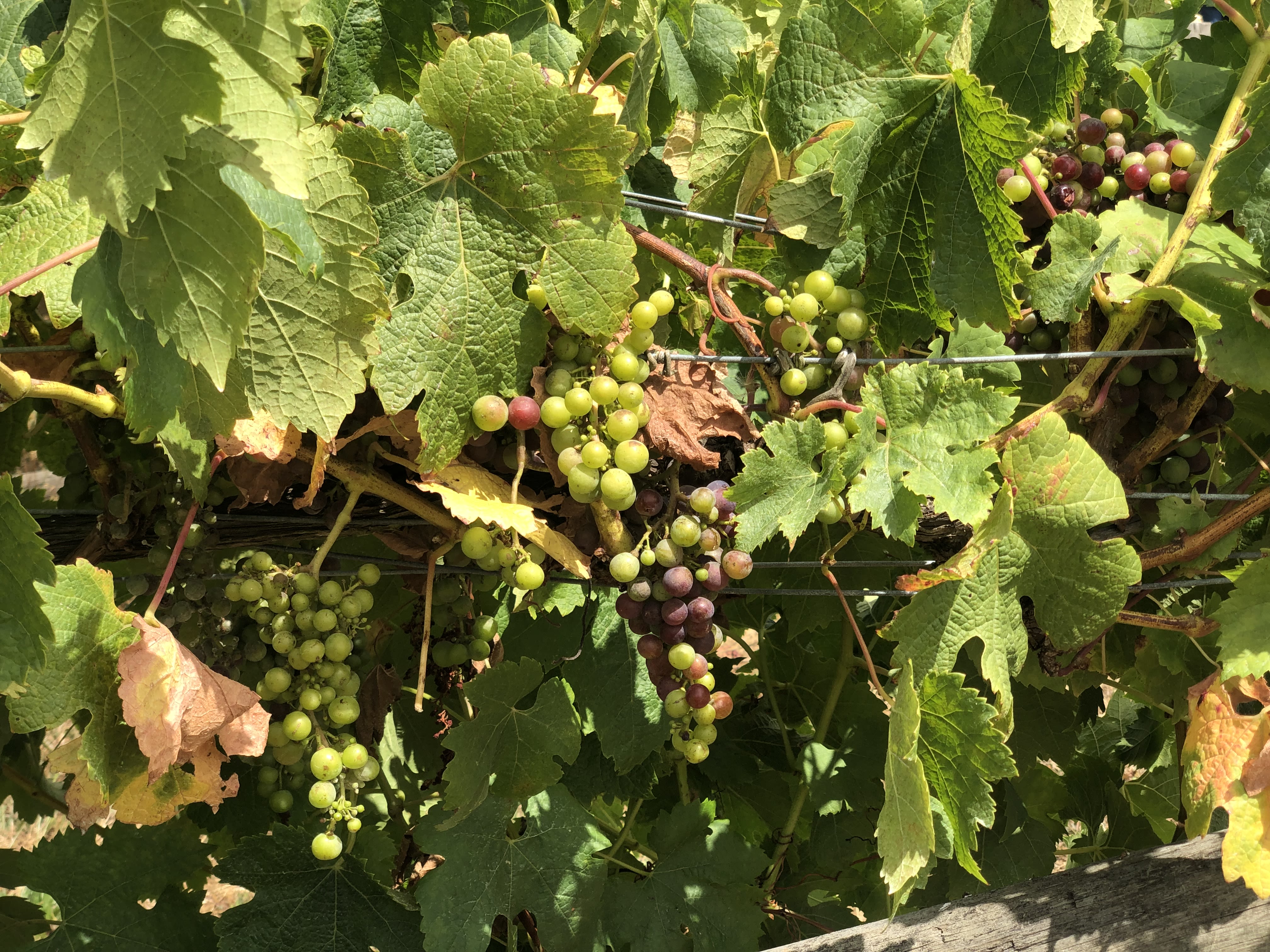
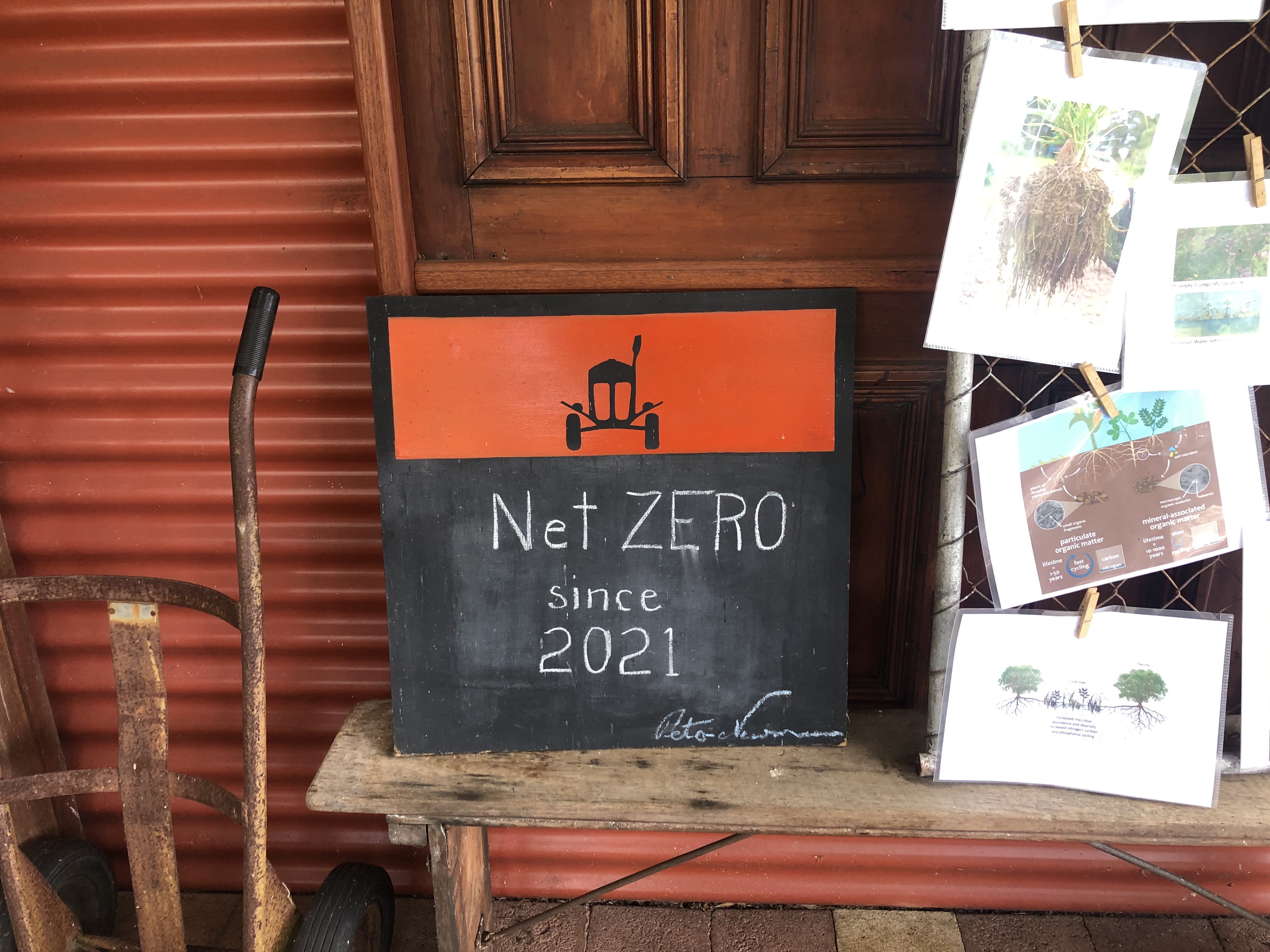
The Orchard
FACT FILE
- 170 fruit trees
- Small amounts of many things (from cherries to bananas)
- Fruit volumes vary - 250 + kgs of plums this year, 'colossal' volume of olives last year but zero this year
- No accurate figures as the fruit is traded for eggs and vegetables
- Some produce is taken to local markets, but only small amounts
The fruit isn't a commercial product for the farm so accurate statistics about production aren't available. Instead, the fruit is used as a farm currency. Murray may pick and sell five kilos to someone who may take it to a local market, but he has a network of people who help with the farm and business who are paid in avocados or apples - whatever he has available.
"What's your production? Well, I don't know. I just swap it, I don't measure it all..." - Murray Gomm
Diversity is key in the orchard - but Murray is keen to push it even further. He knows that if he sees dragon flies buzzing around the orchard, the place is healthy.
This autumn he'll plant layers of different plants to super-boost the diversity. One of his favourites is fennel, as it will attract predatory wasps and lacewings that will take down thrips, mealy bugs and mite as well as being a chop and drop mulch providing a nutritious herb. He's also planning to extend out the mulch layer, adding as much diversity as he can get his hands on - essentially giving every fruit tree the opportunity to have a diverse vegetable, flower and herb garden around it and a diverse soil food web below providing pest, disease, and nutritional services.
"I let nature do the heavy lifting and all the complex stuff on this farm. It turns up every day, doesn’t send me a bill and has had billions of years of on-the-job training" - Murray Gomm
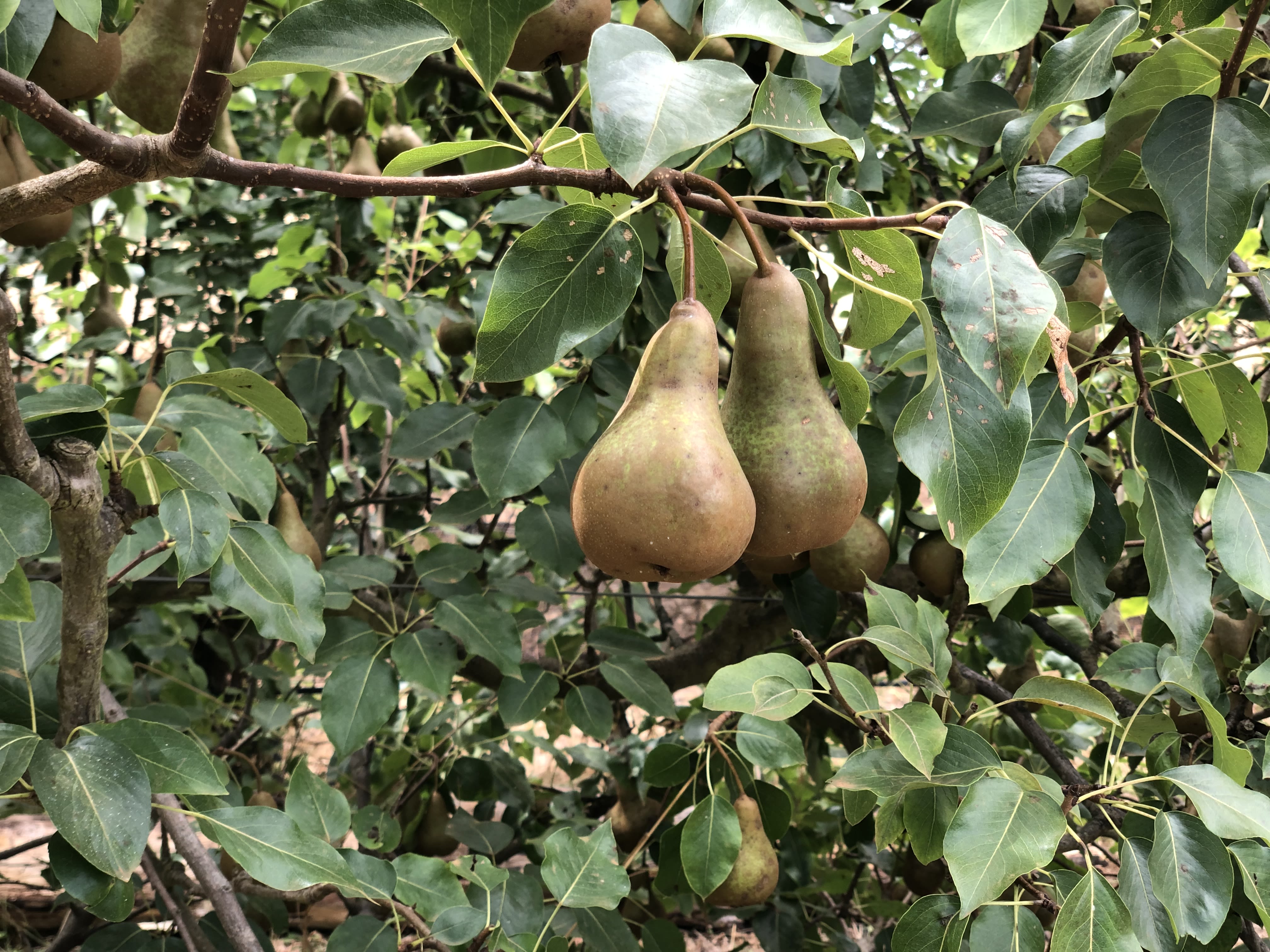

Bookable Experiences
To boost visitors and generate income, Murray has organised tours of the farm to share his experience of regenerative agriculture and inspire others to do the same.
Soil Testing
Murray and Pam used to rely on 'traditional' soil tests to guide their organic fertiliser applications in the vineyard. But when they stopped doing the tests (due to various reasons including being too busy), they also stopped applying fertiliser. Interestingly, the vines continued to be healthy and vigorous - saving both time and money for Murray and Pam.
"Don’t fall into the trap of letting soil tests be a gateway drug to a fertiliser addiction" - Murray Gomm
However, Murray did invest in a more comprehensive soil biology test which analysed the entire soil food web in the vineyard.
He describes receiving the Soil Biology Test results as a 'Eureka moment'. It showed much more than the 'traditional' soil tests did, giving him a granular insight into the make-up of the soil food web in the vineyard.
'The scope and depth of all those little buggers that are too small to see with the naked eye' - Murray Gomm.
The report outlined all the critical services the microbes are providing including nutrient solubilization, nutrient recycling, nutrient accessibility and drought resistance. The deep insights and clear, easy to read 'traffic light' format was incredibly valuable to Murray, giving him a very clear picture of what was going on under the vines.
Biggest Challenges

Finding useful info...
Murray's advice is to look further afield than mainstream media but also check that all information that you consider is backed up with genuine fact. He admits that his science training is an asset and gives him the background to be able to sift through some of the less convincing data out there.
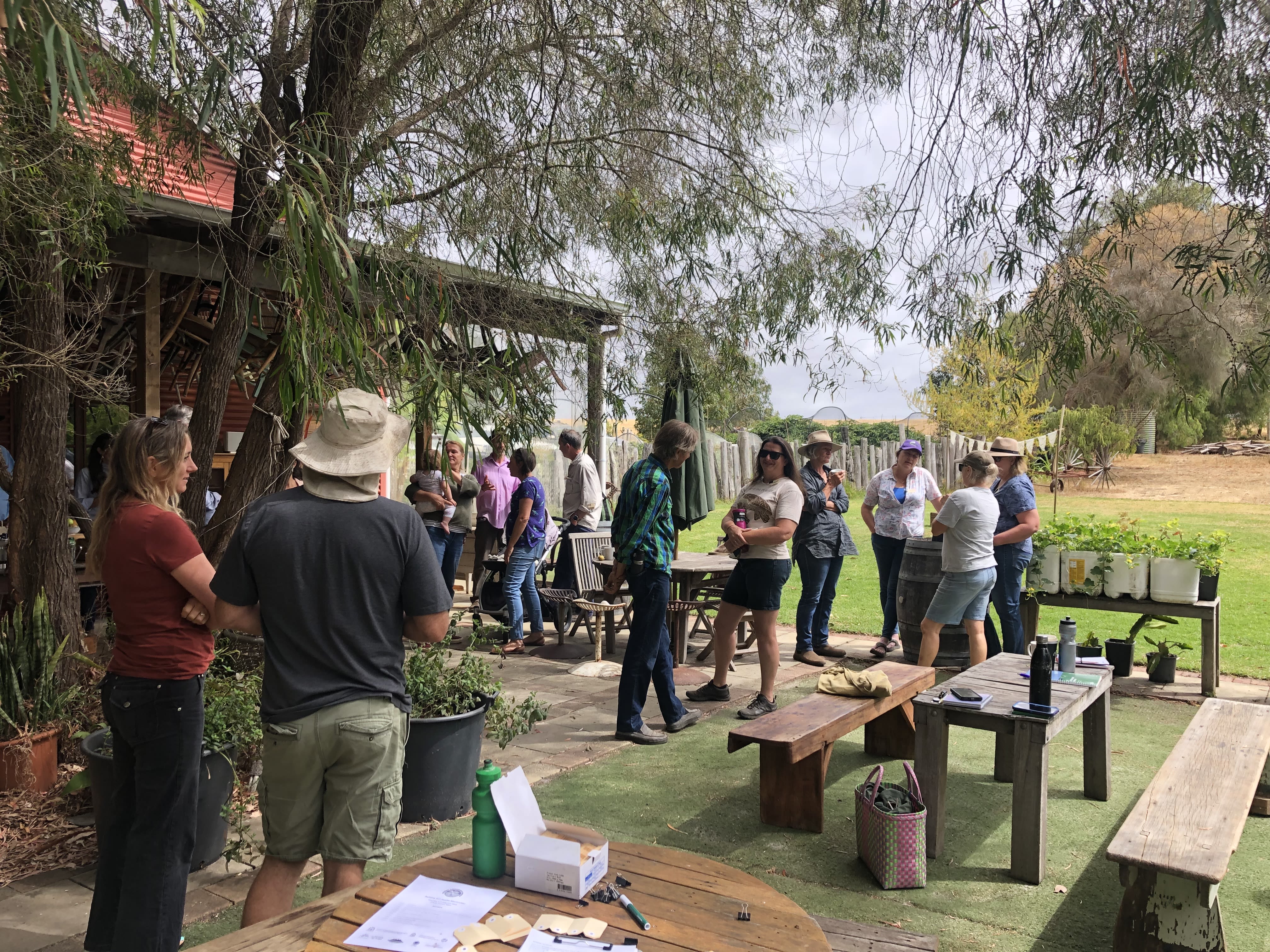
Finding networks...
Go to field days, mix with people who are doing similar things, ask questions, join zooms, go to seminars...Murray recommends doing as much training as possible with reputable groups and absorb as much information as you can to apply to your own land.
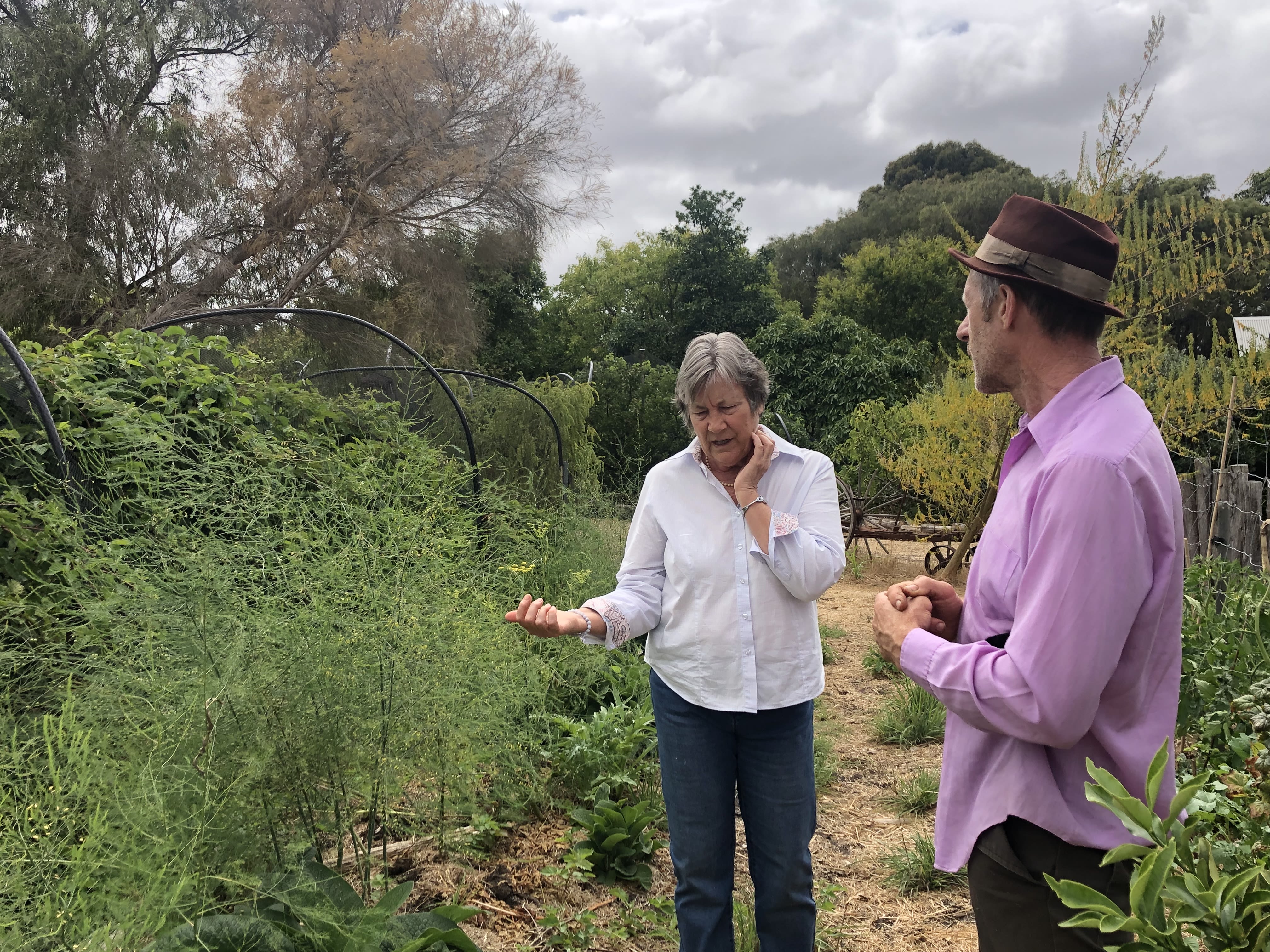
Find experts you trust...
Be proactive and work as closely as you can with experts you trust. Youtube is a constant source of learning and a way to connect with others who are on a similar journey.
Any Advice?
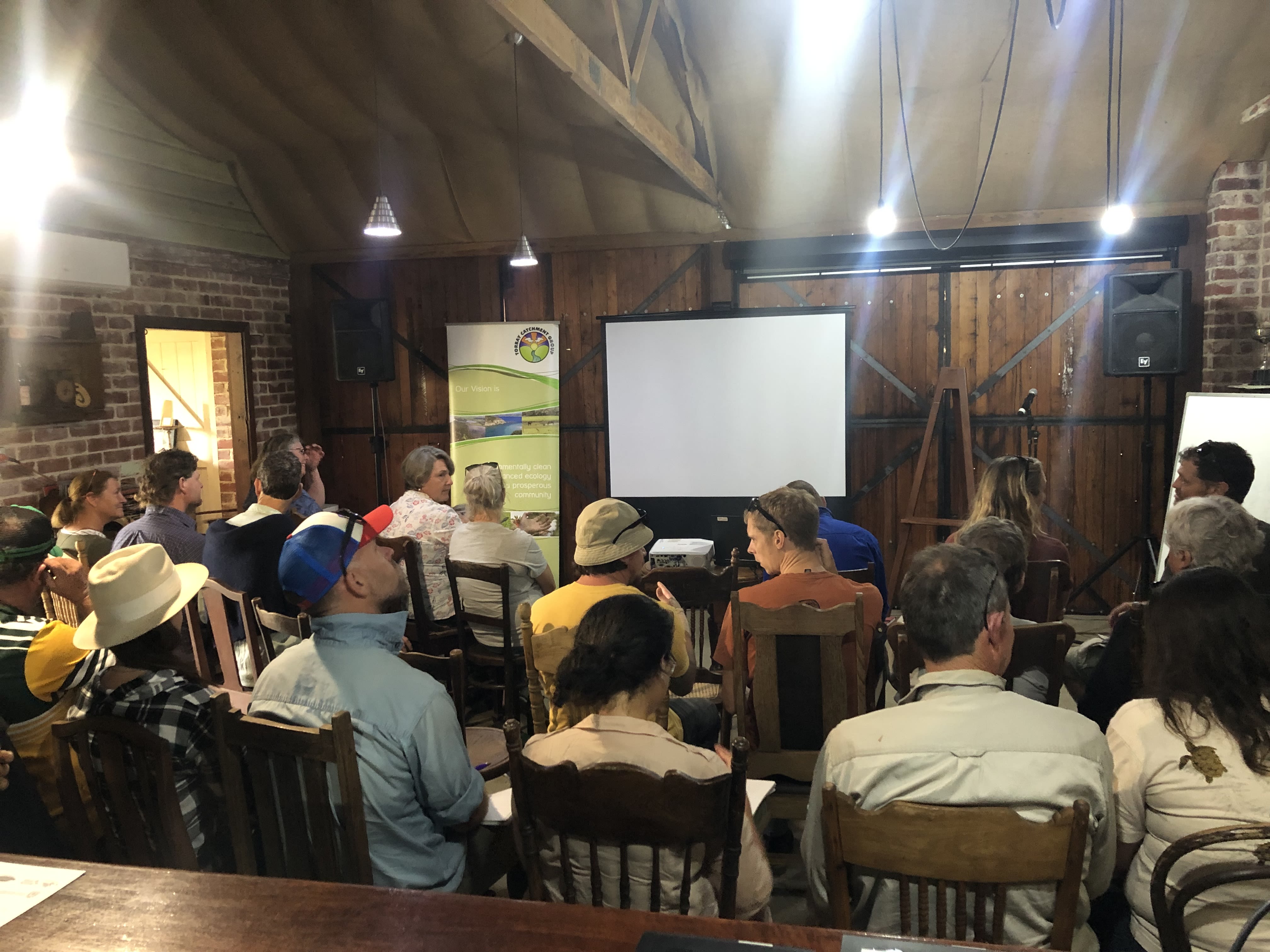
Don't believe everything...
Even if it sounds convincing, don't swallow it without some rigorous thought and research. Whether it's conventional, mainstream agriculture or a new philosophy on biodynamics or permaculture - you have to work out what works for you.
We're in a world that is filled with persuasive marketing - there are lots of products that claim to deliver numerous beneficial outcomes. Always check and double check. Most of the time you just need to get out of the way of nature and stop thinking you are in control.
"Put it through your own bullsh*t meter before you believe it." - Murray Gomm
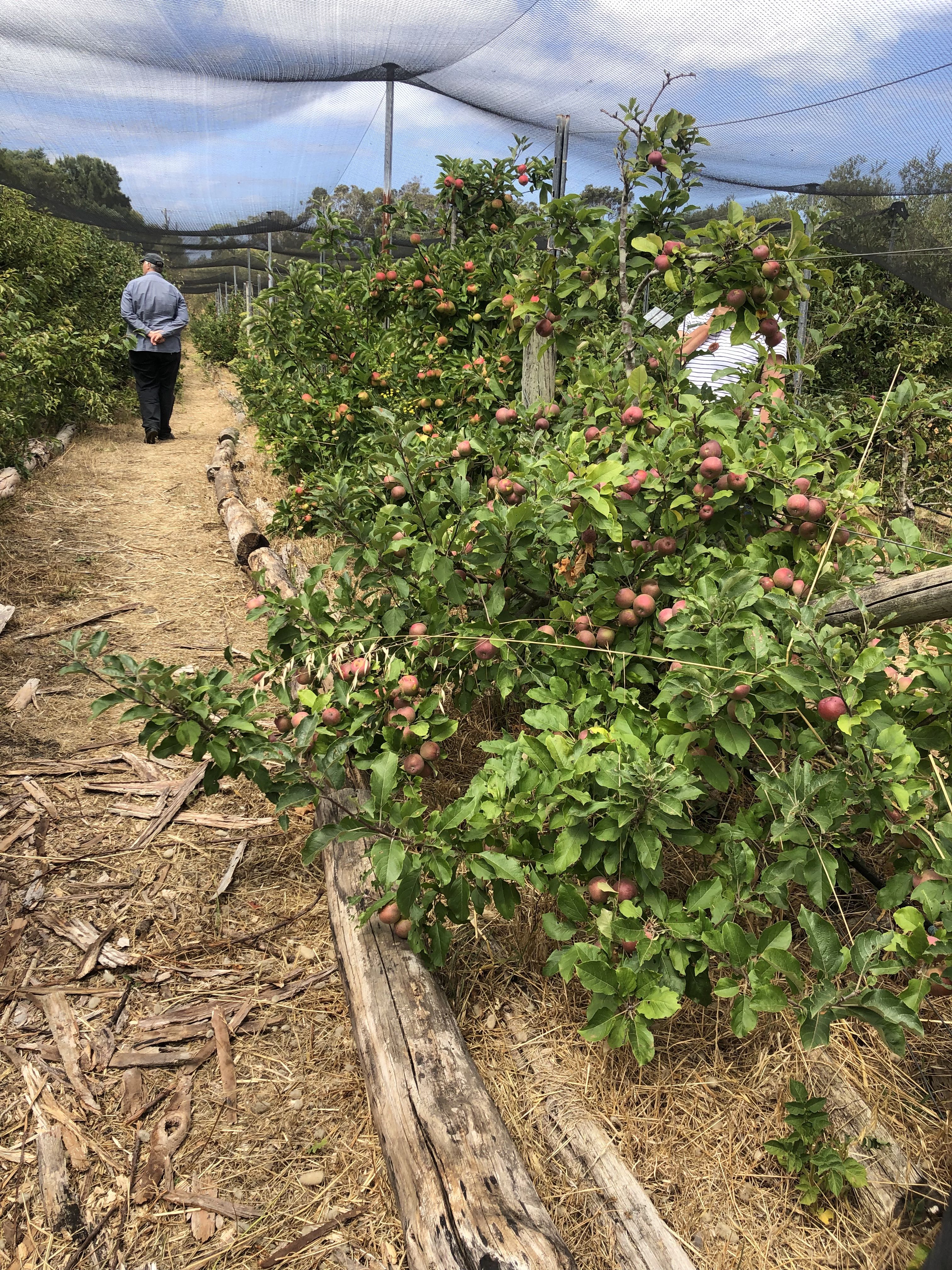
Trust nature...
Don't be duped by the marketers! Murray's orchard is bursting with life and it's fed of farm waste. Do you really need all the stuff the markets convince you that you can't do without?
"Nature isn't going to slip a brochure under your door - but it is out there every day showing you what it can do." - Murray Gomm.
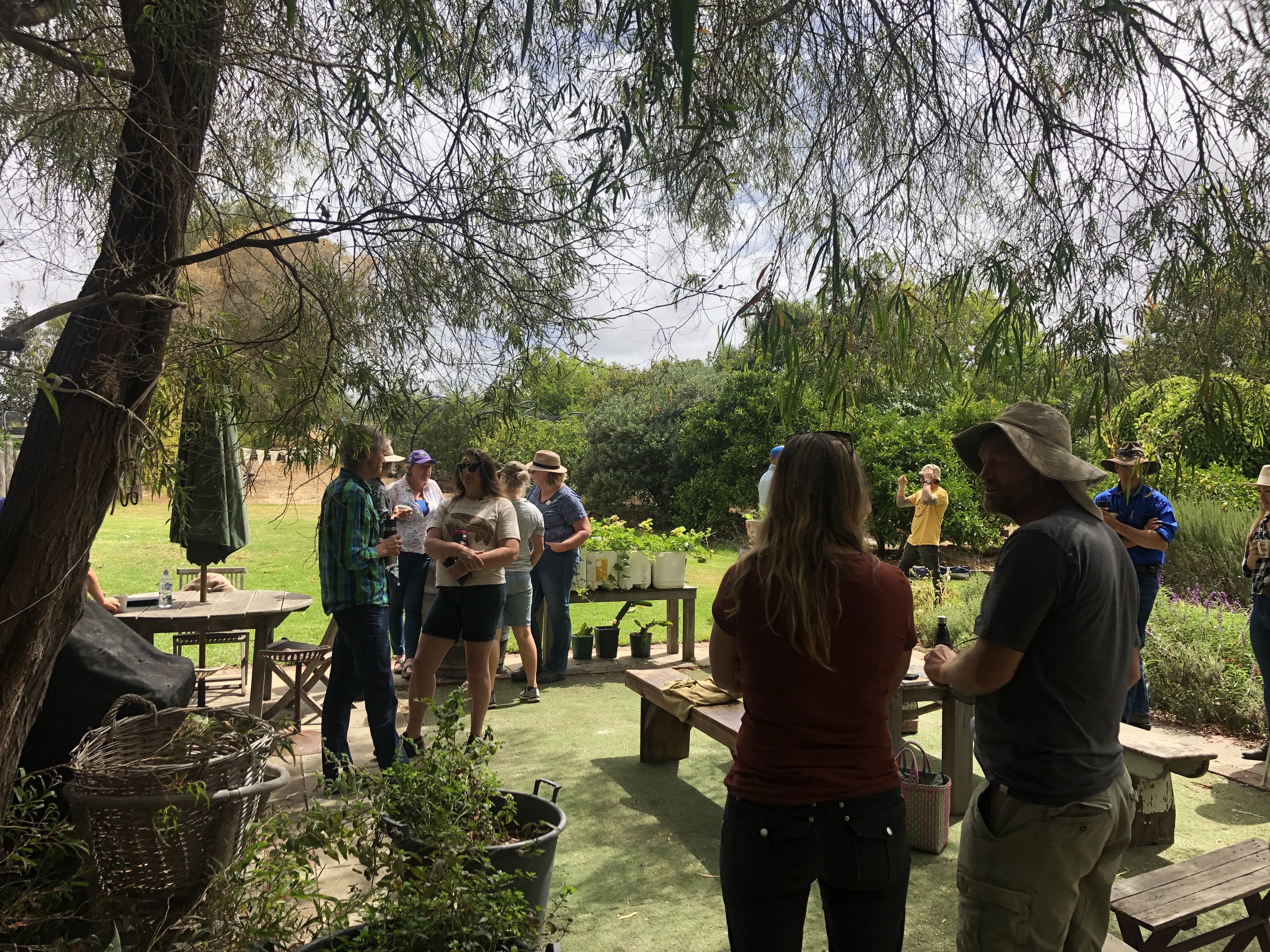
People power...
Find a network of likeminded people who you can trust to share useful, relevant information - but who also have an open mind. Listen to everyone, absorb it all - don't close the door on anything. If you do, you're limiting yourself.
In this digital world your network doesn't have to be face-to-face - there are lots of online groups bursting with proactive people willing to share their ideas and experiences.
"Be open, share, and network. None of us can do this on our own." - Murray Gomm
Peasants Paradise
Oranje Tractor Wines is a commercial vineyard driven by a couple who are passionate about regenerative agriculture, protecting their soil and enriching their land.
Steeped in ethical growing practices and dedicated to promoting organic and regenerative farming systems Murray and Pam believe that this is the most effective way to build resilient farming systems.
"We live in peasants paradise. We focus on efforts on building our biological bank balance." Murray Gomm
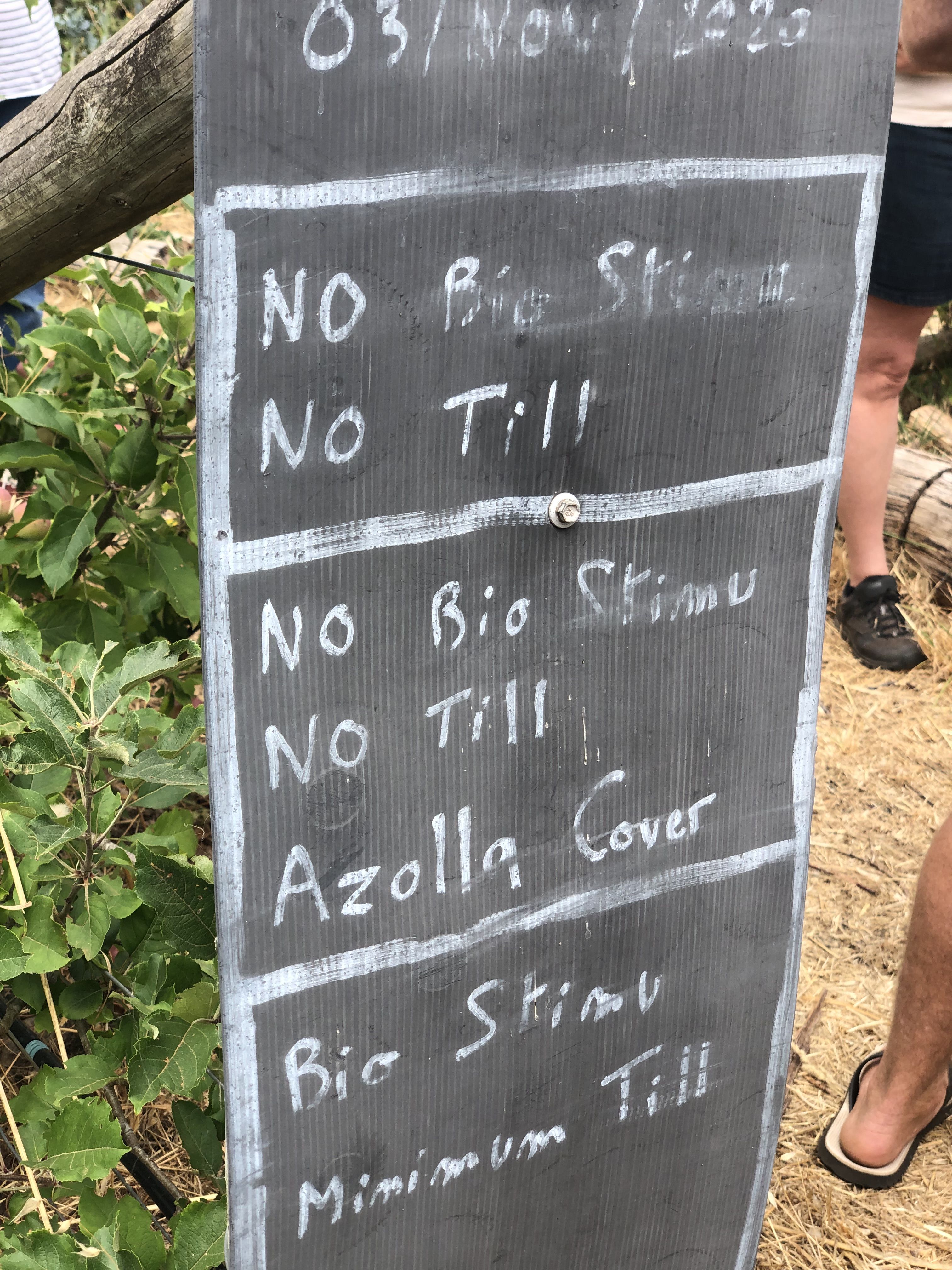

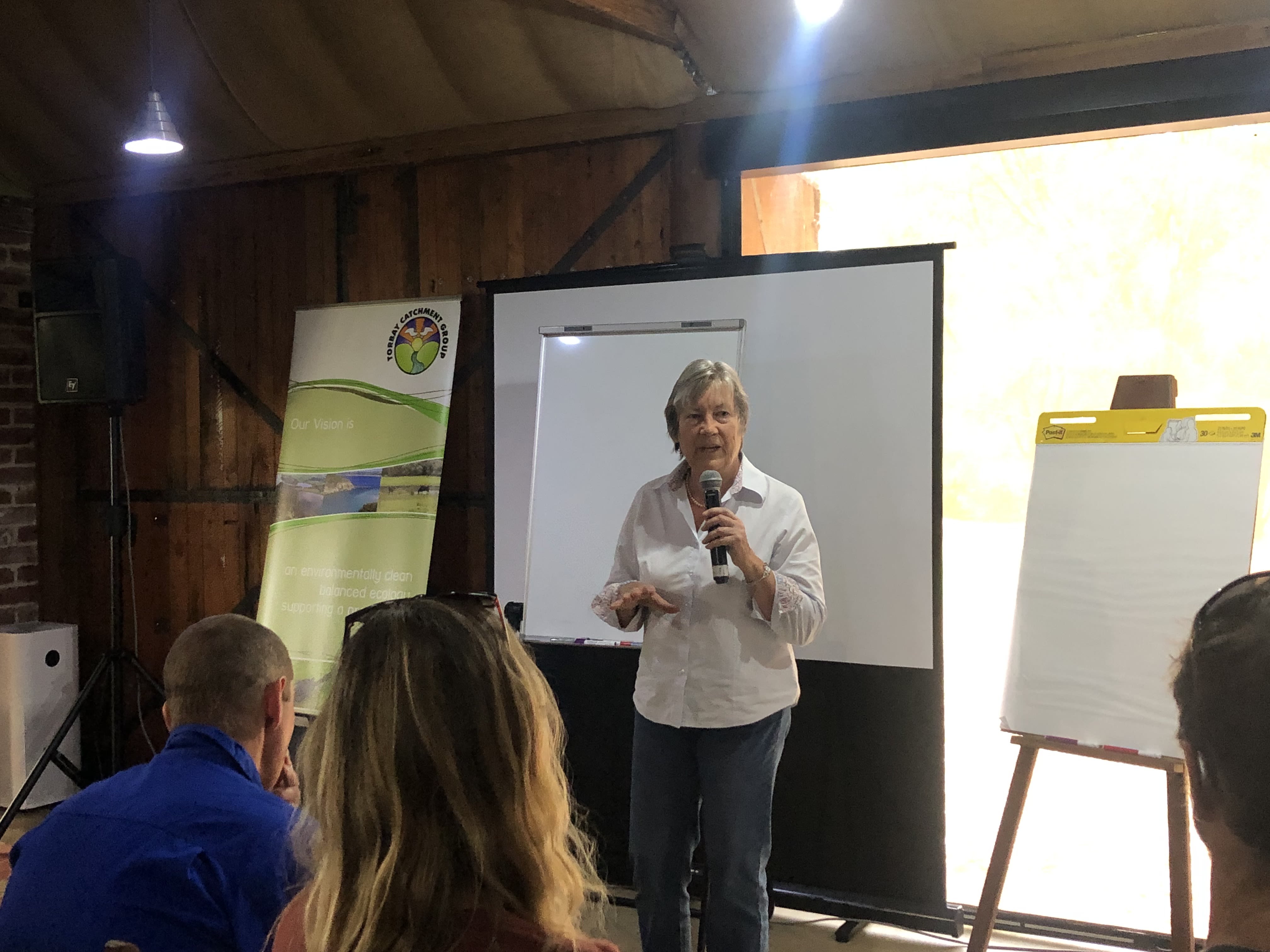
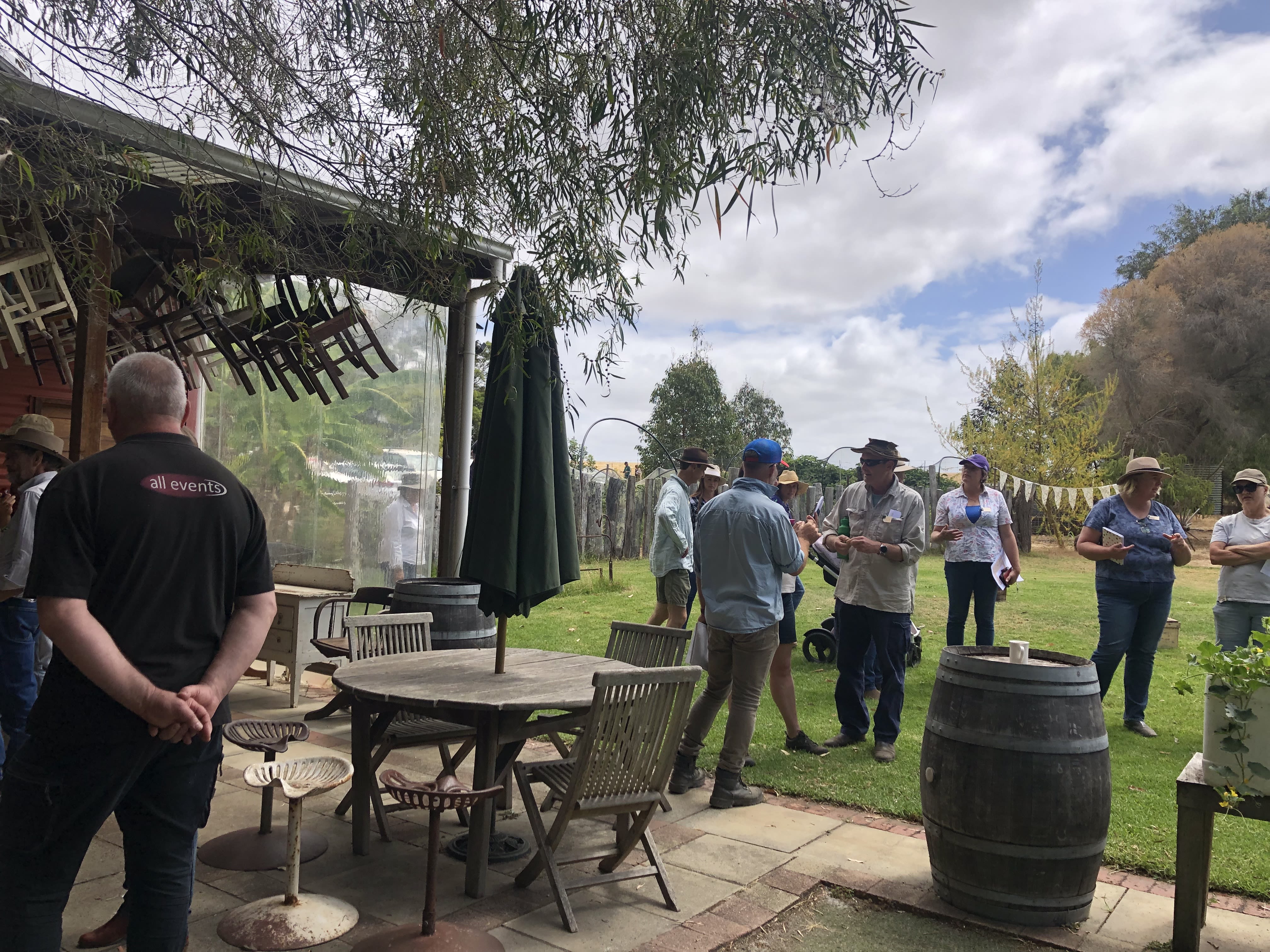

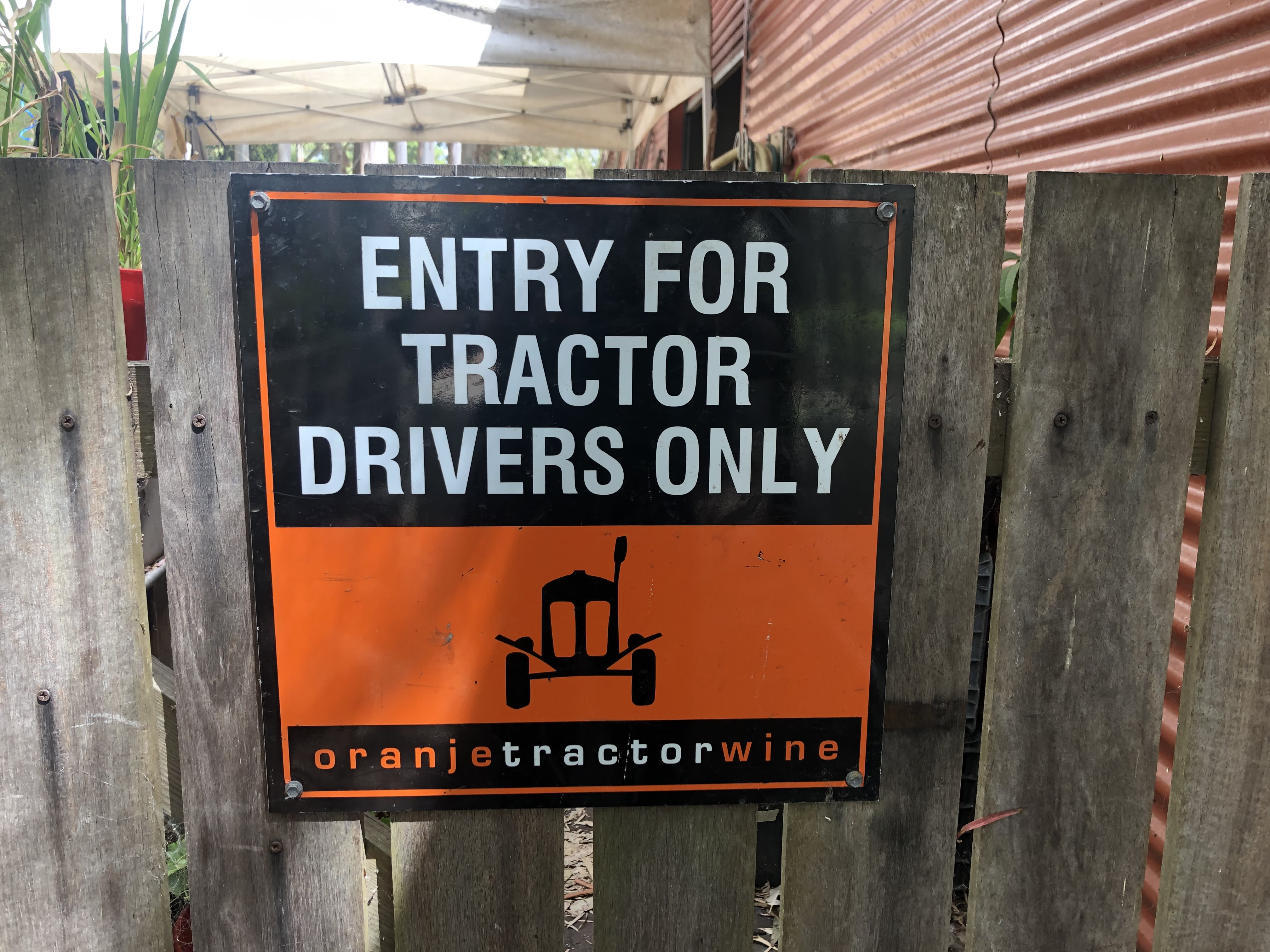
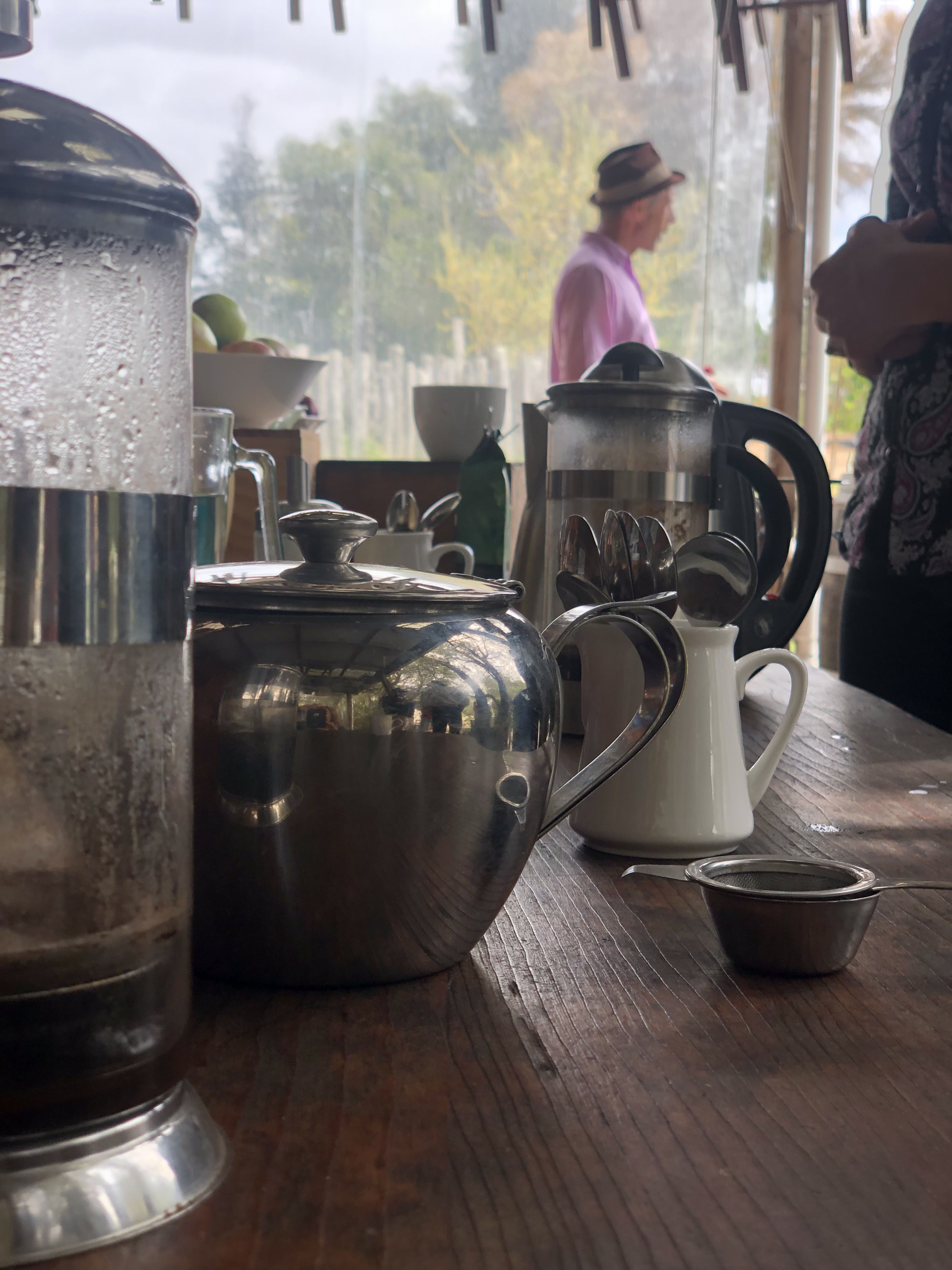







This article was produced by Talkin' After Hours, the Lower Blackwood Landcare's Online Community Forum & Information Hub

